Hiking the Lycian Way, Turkey - Day 4 - Faralya to Kabak to Alinca, and the Lycian Ruins In Xanthos
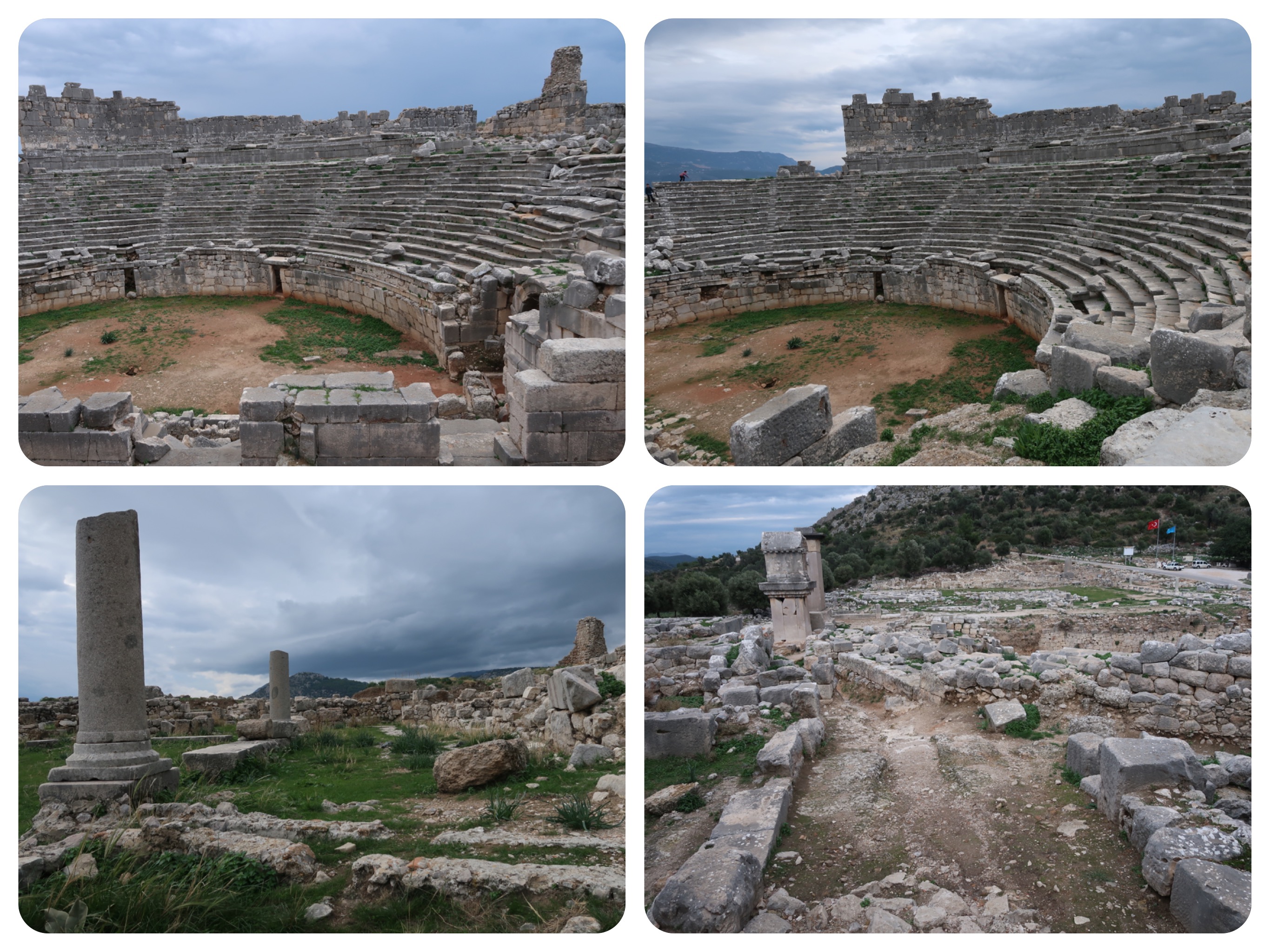
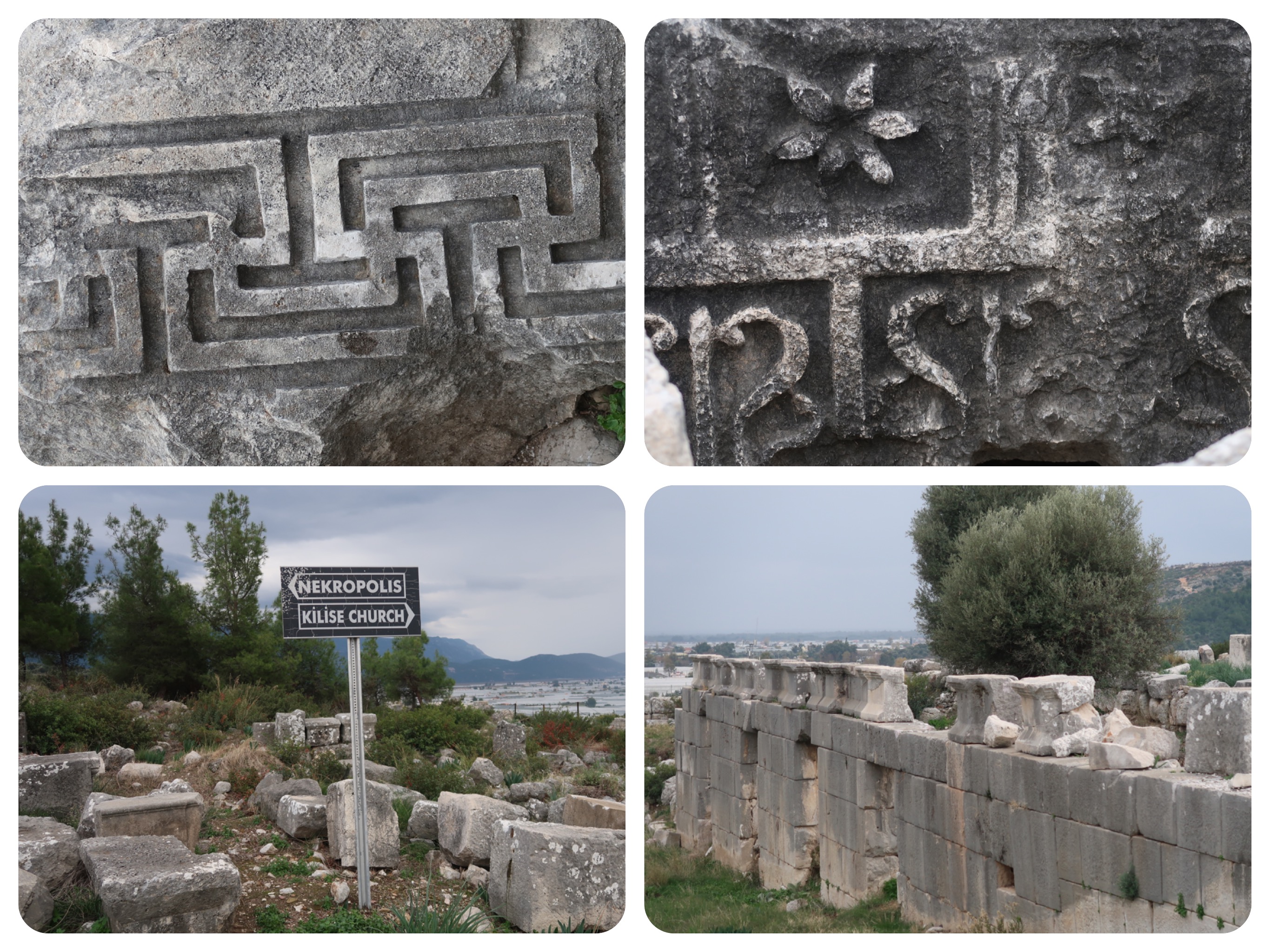
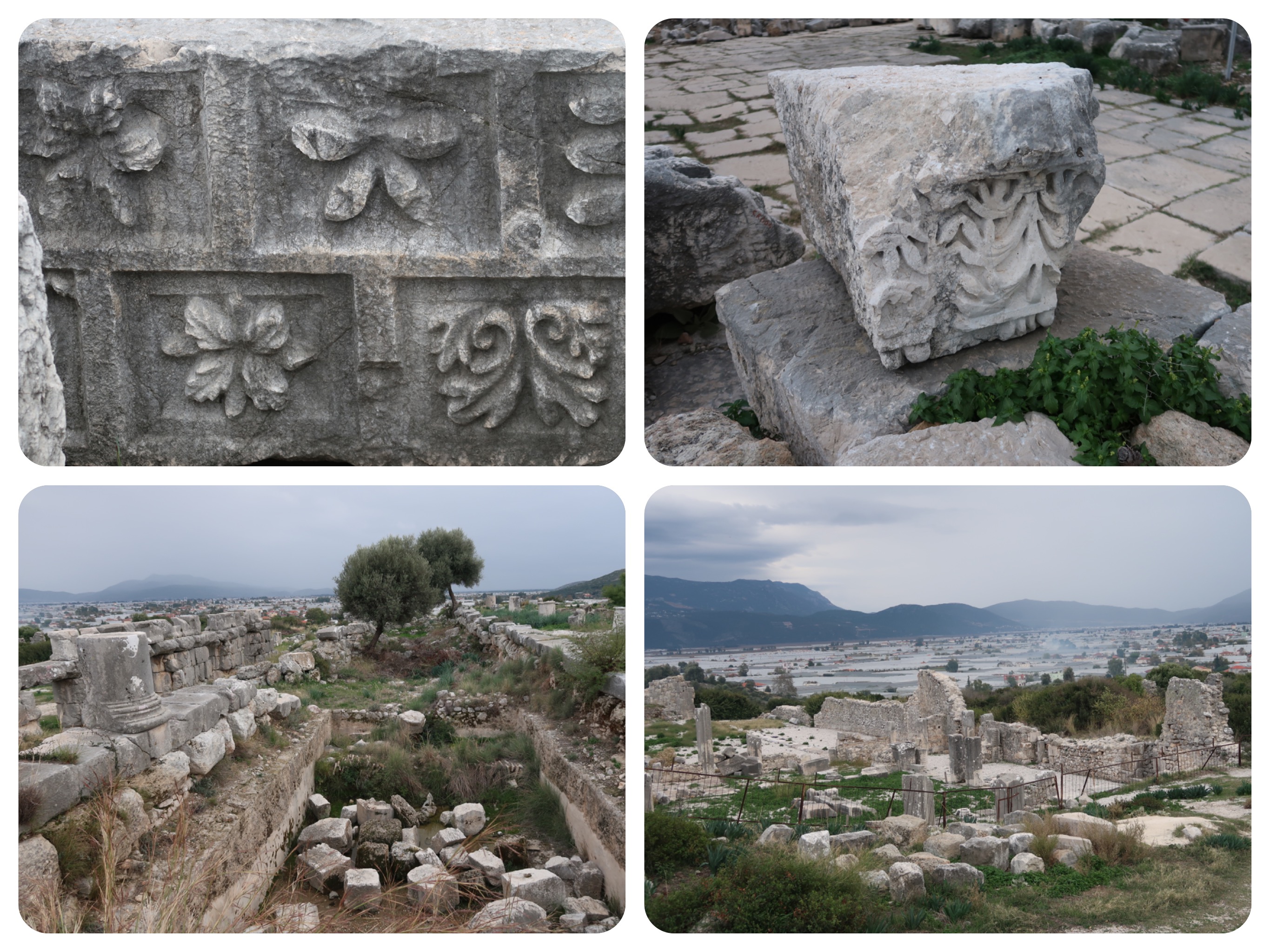
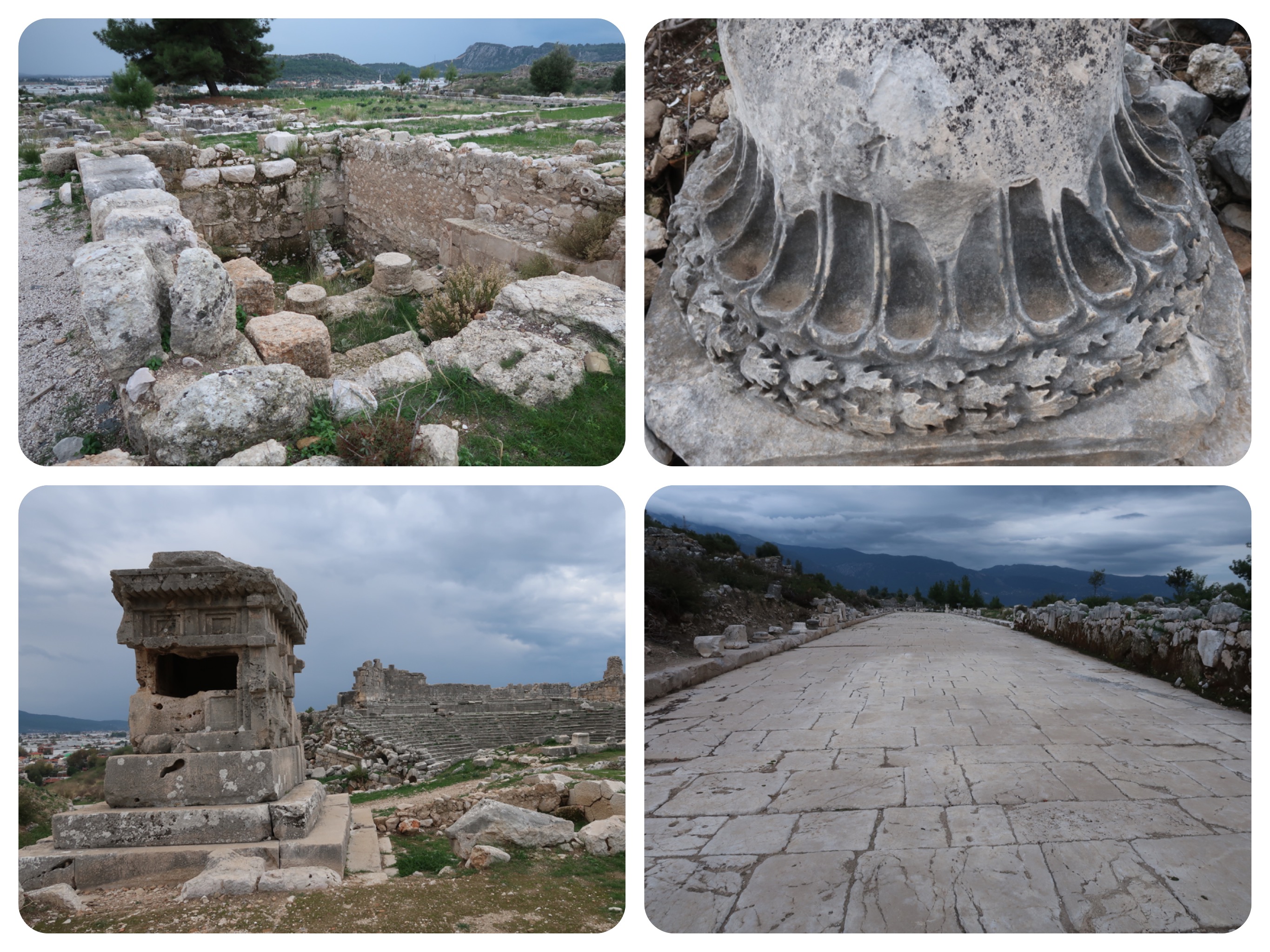
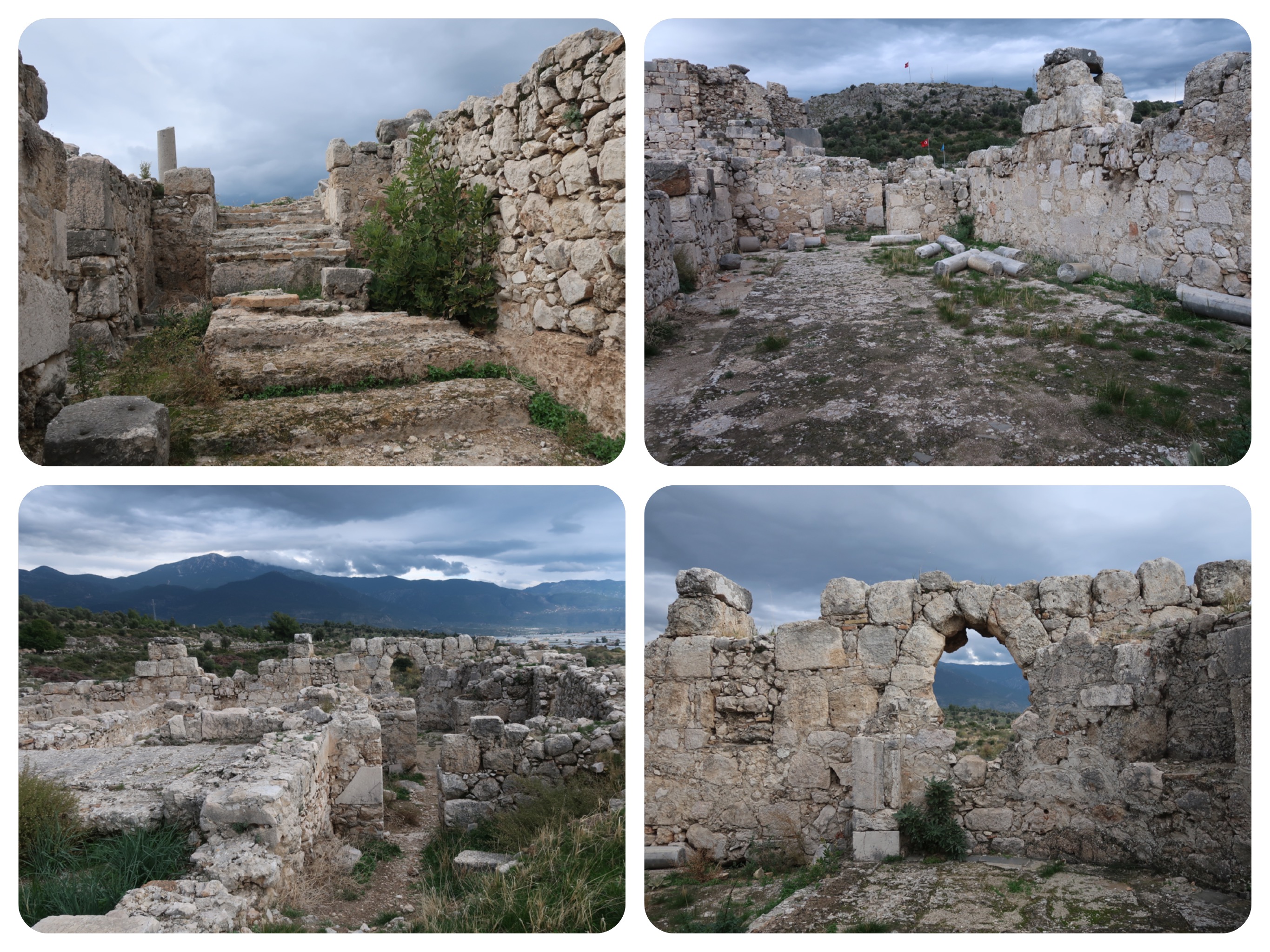
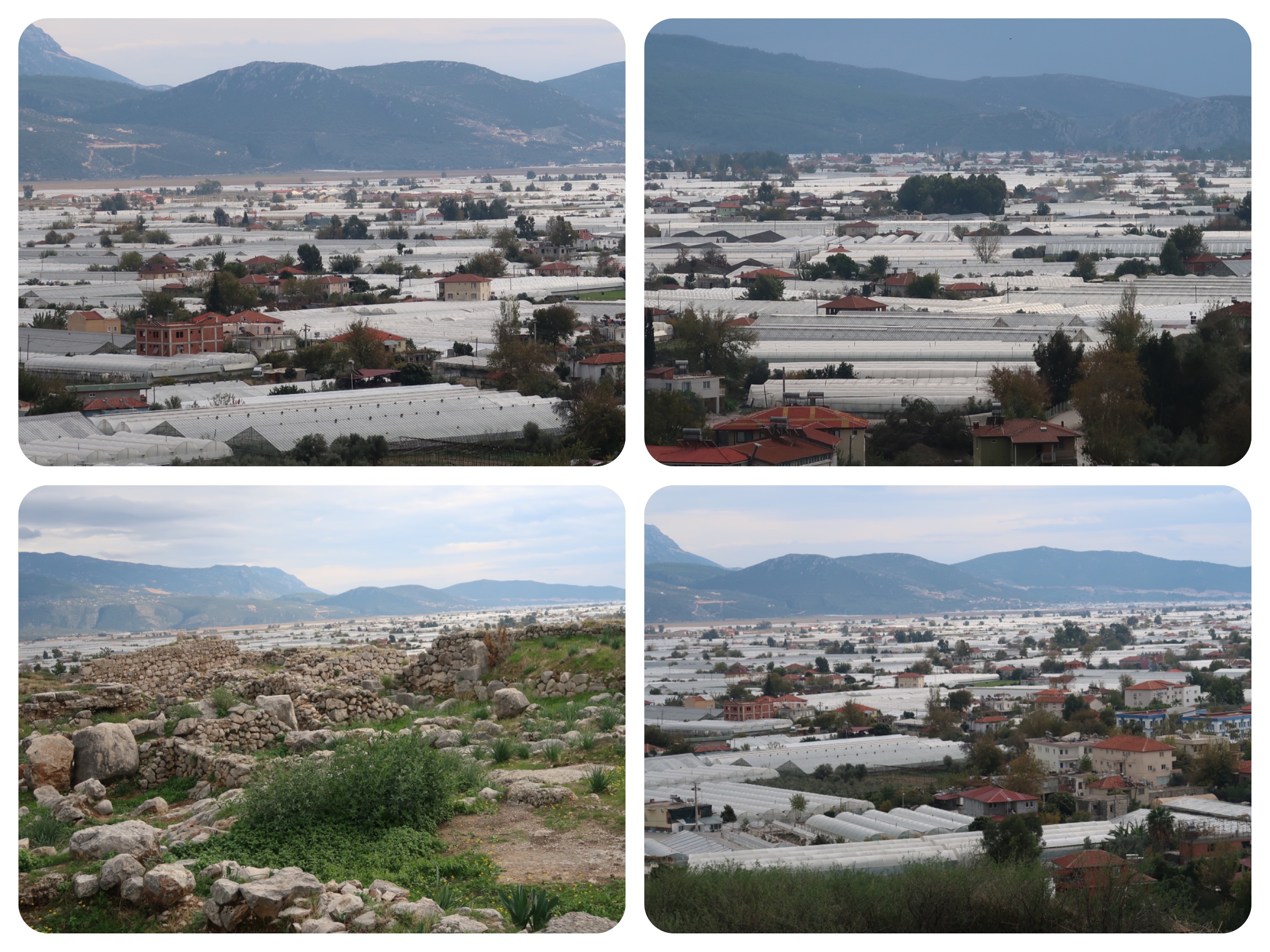
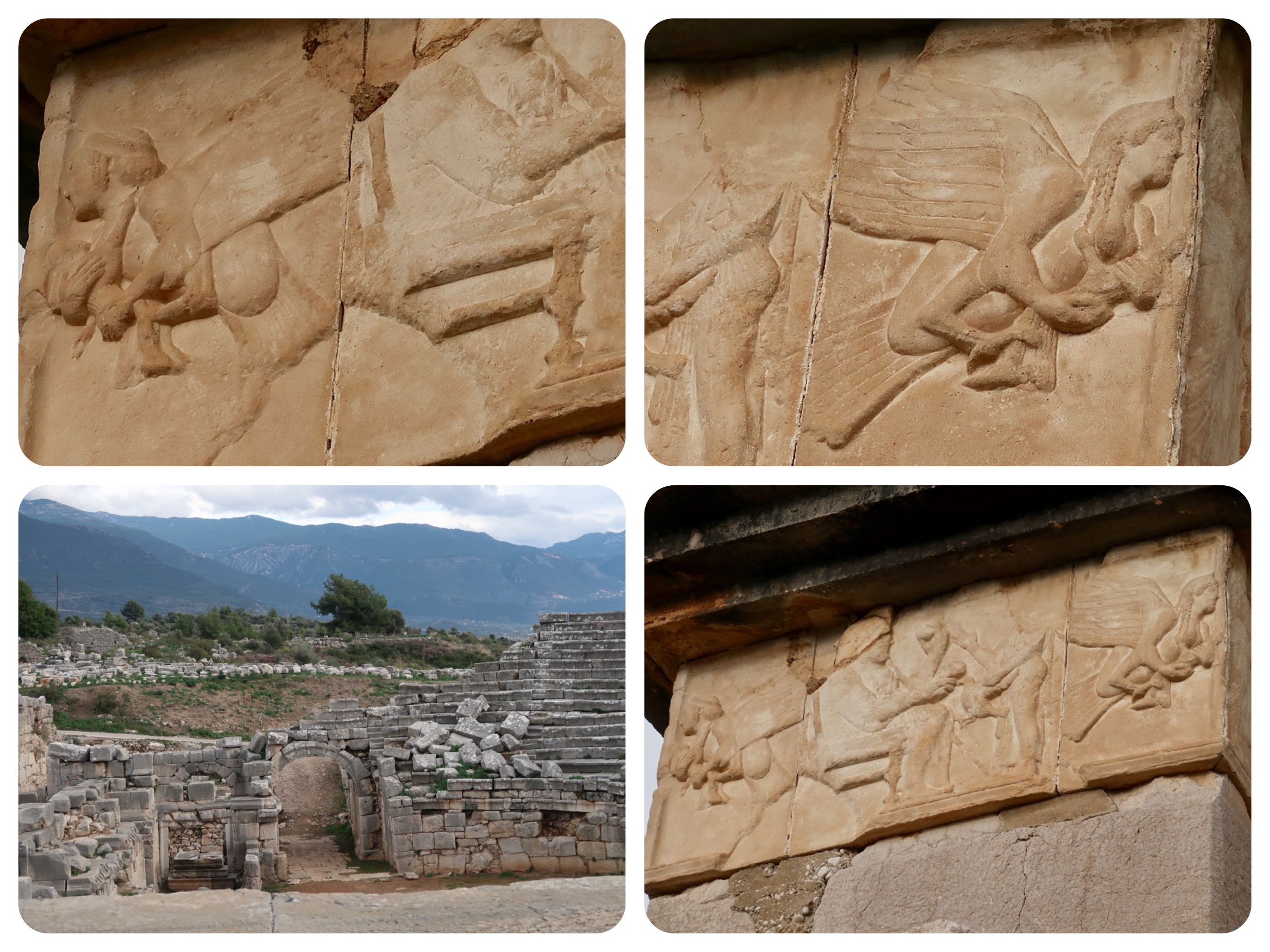
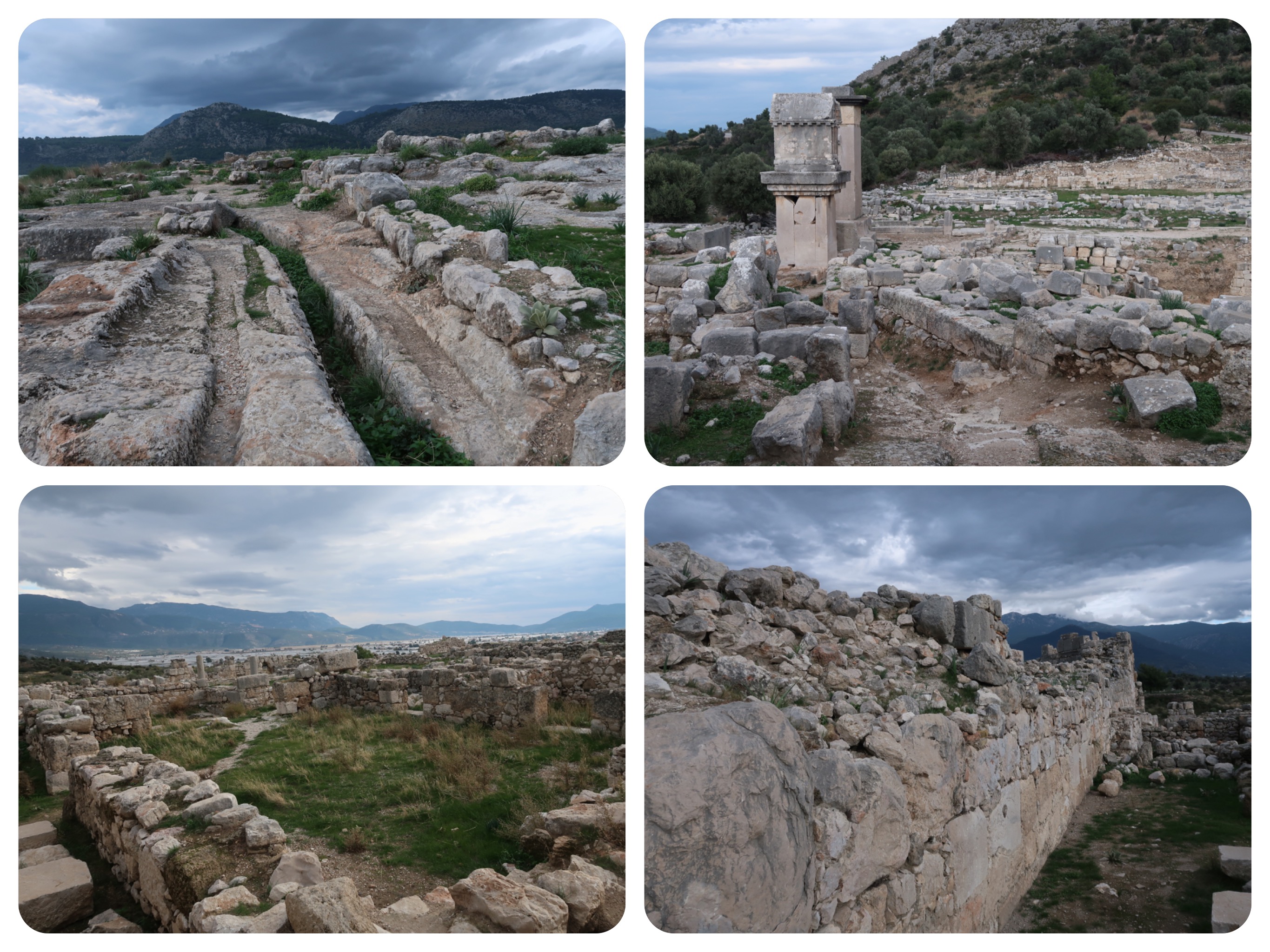
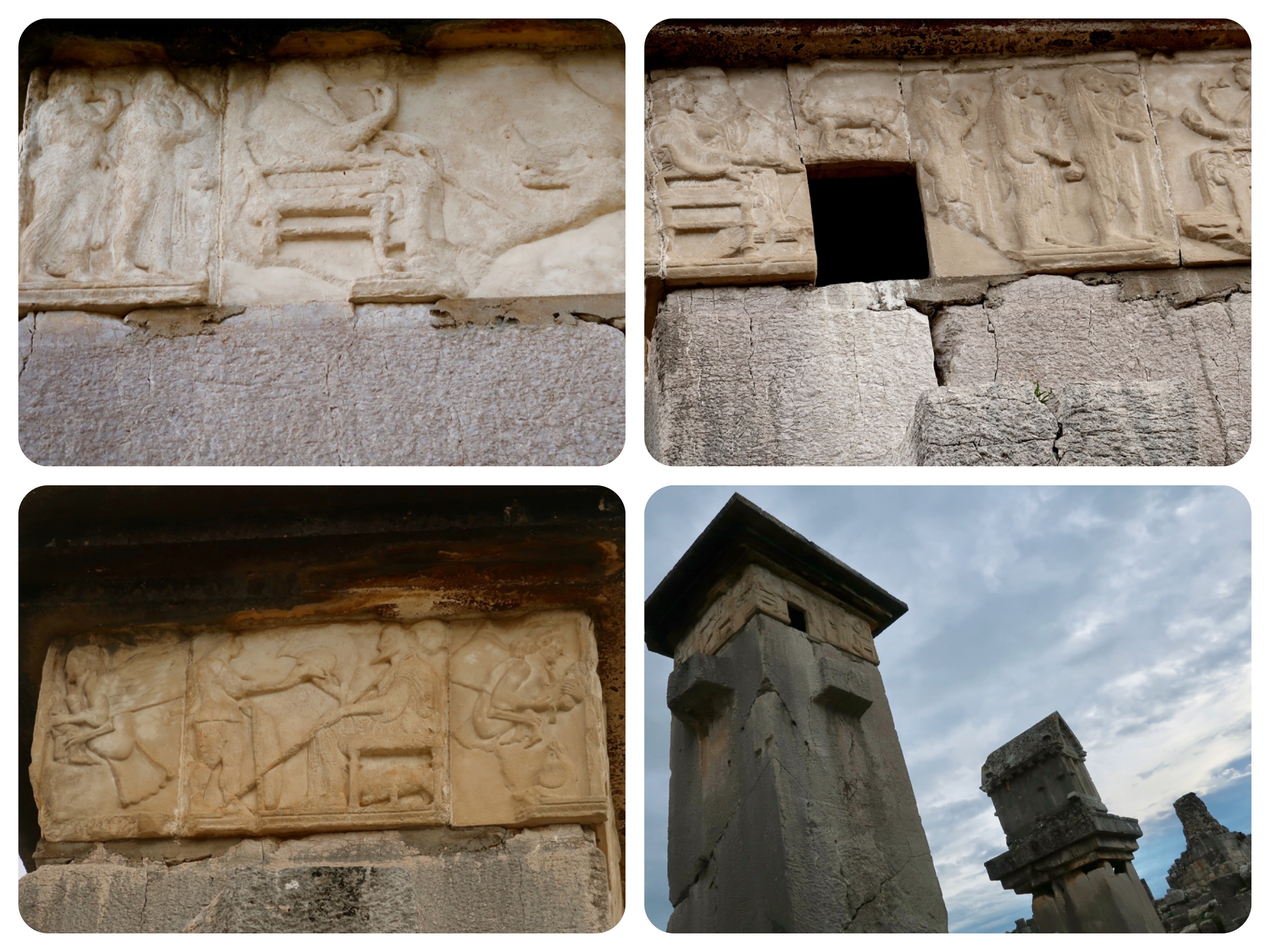
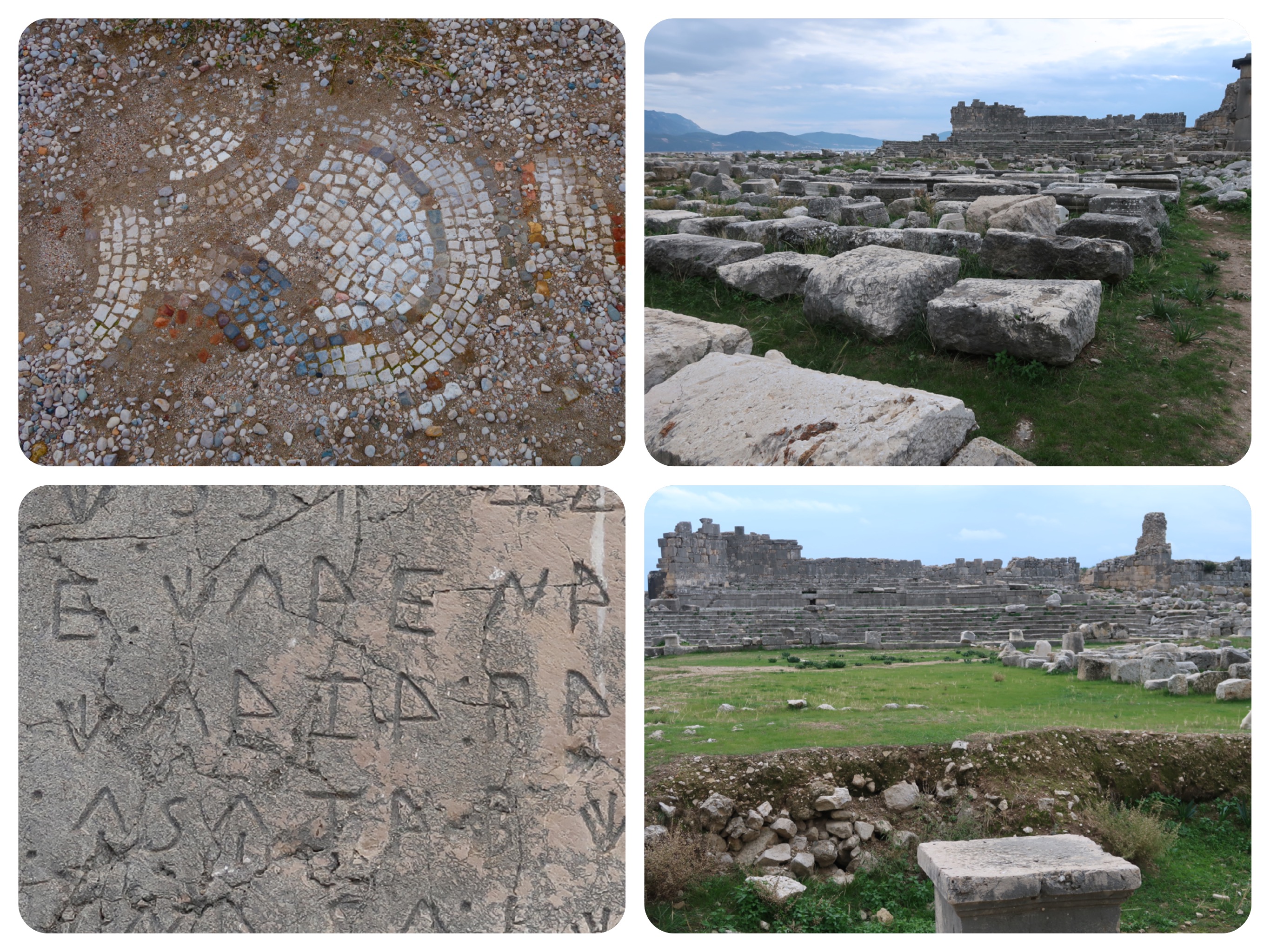
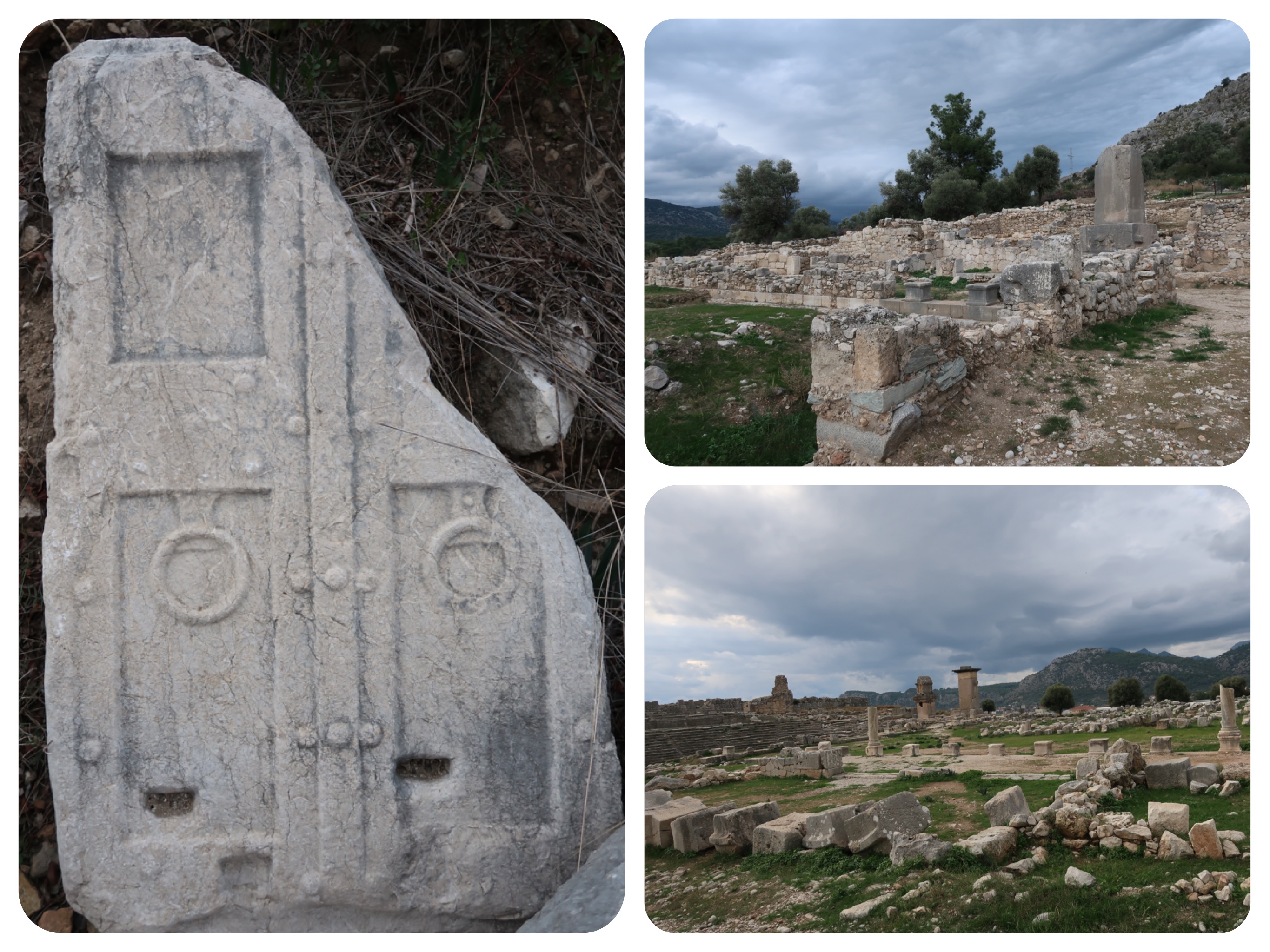
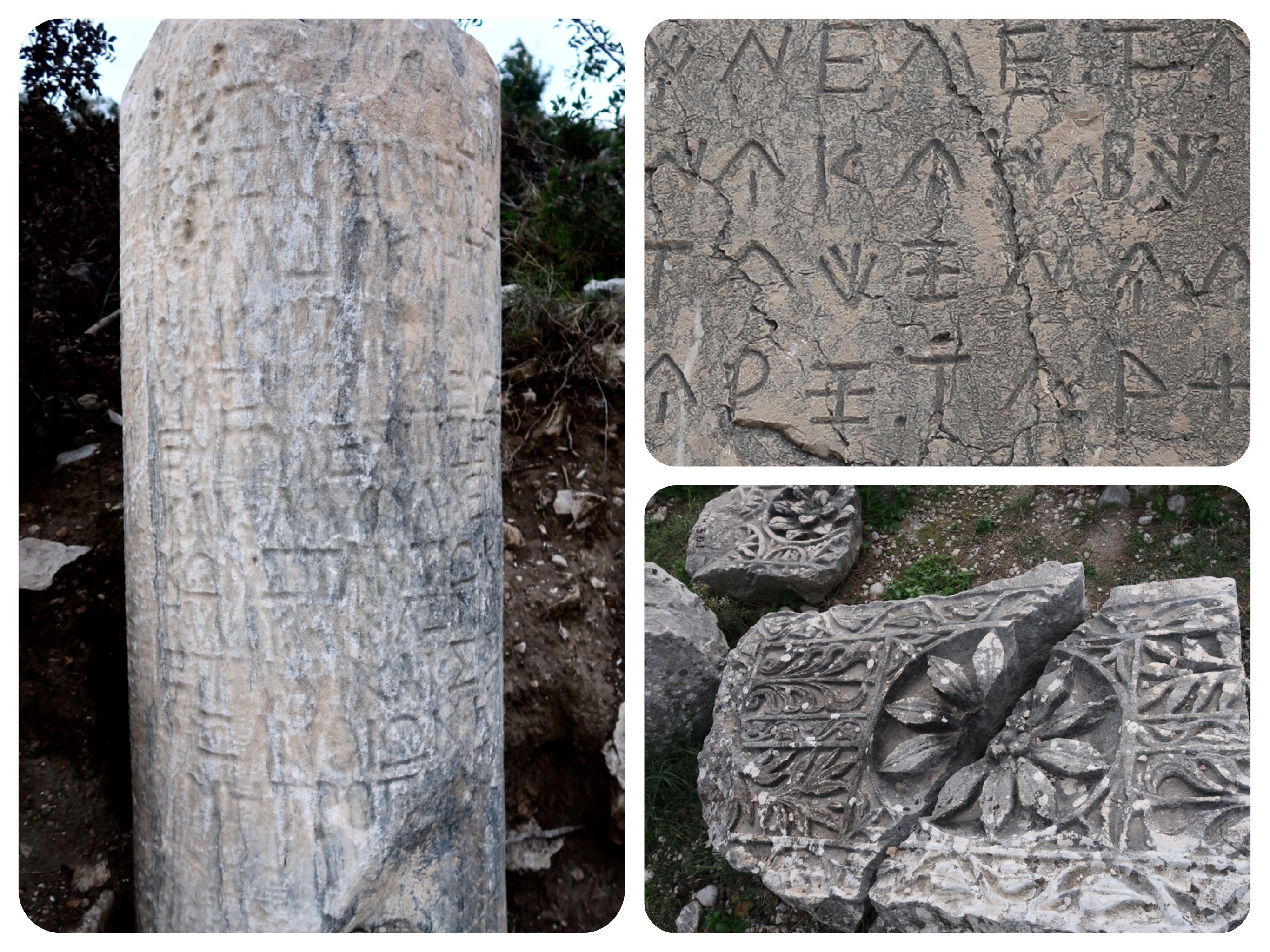
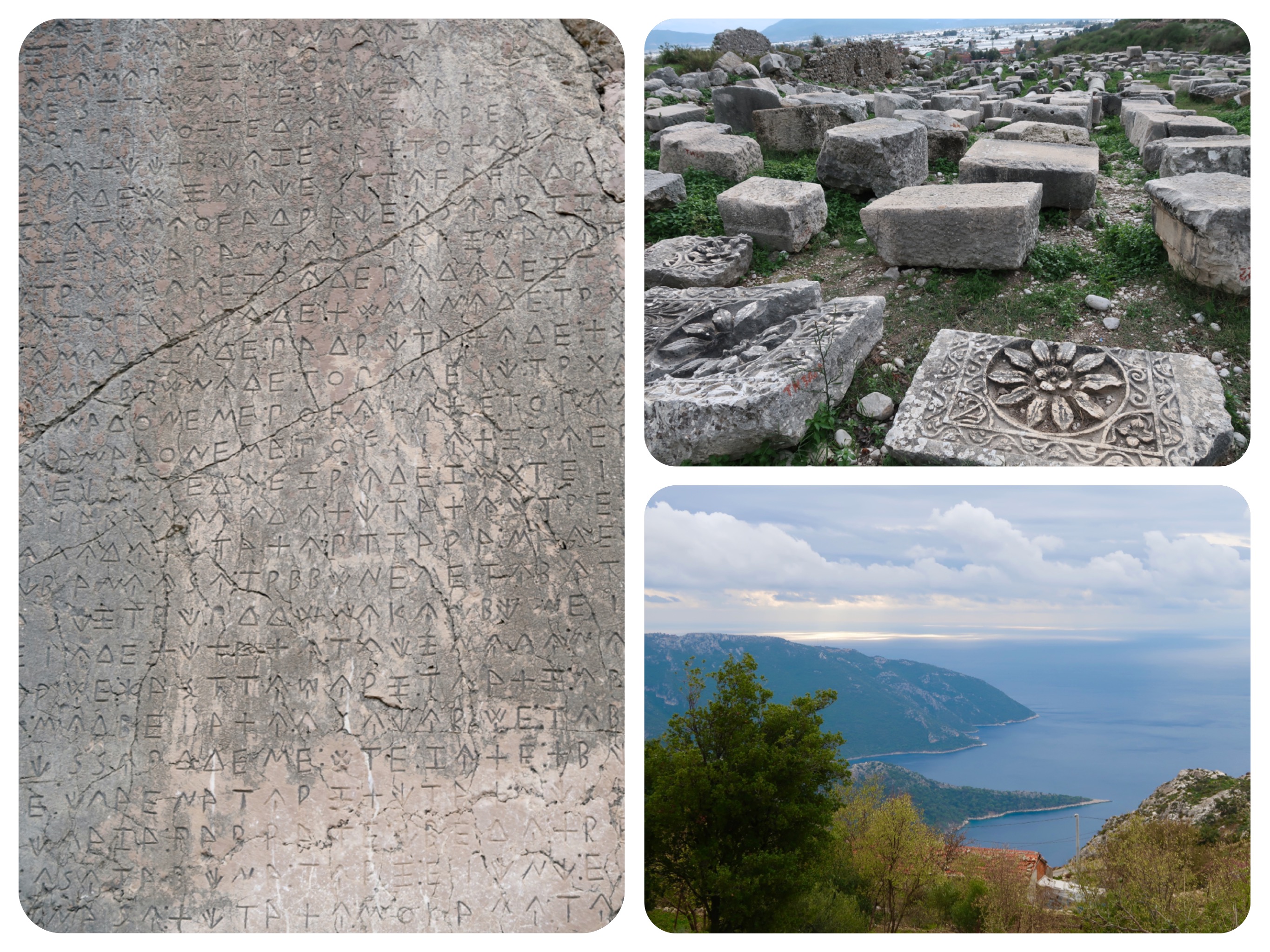
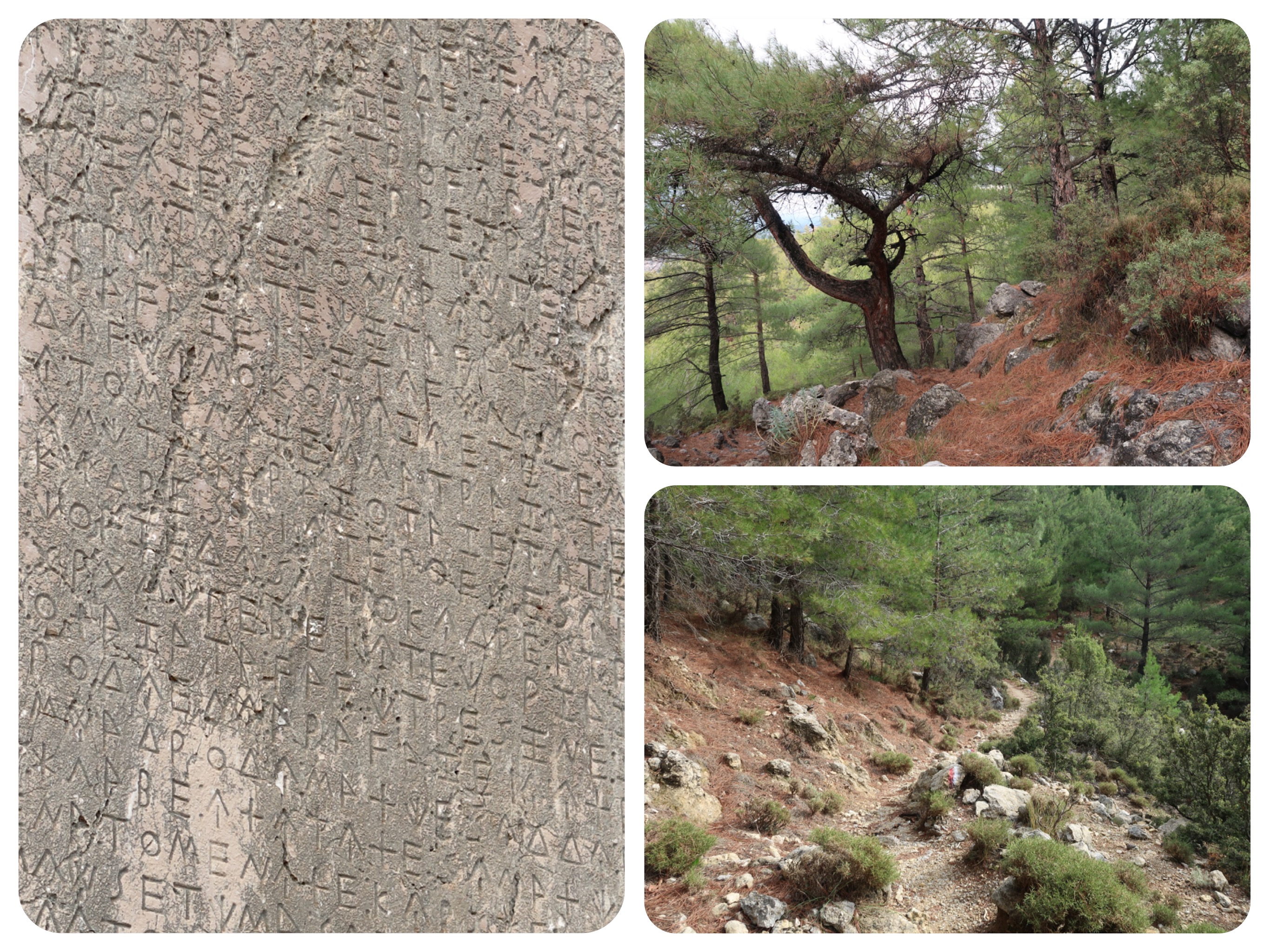
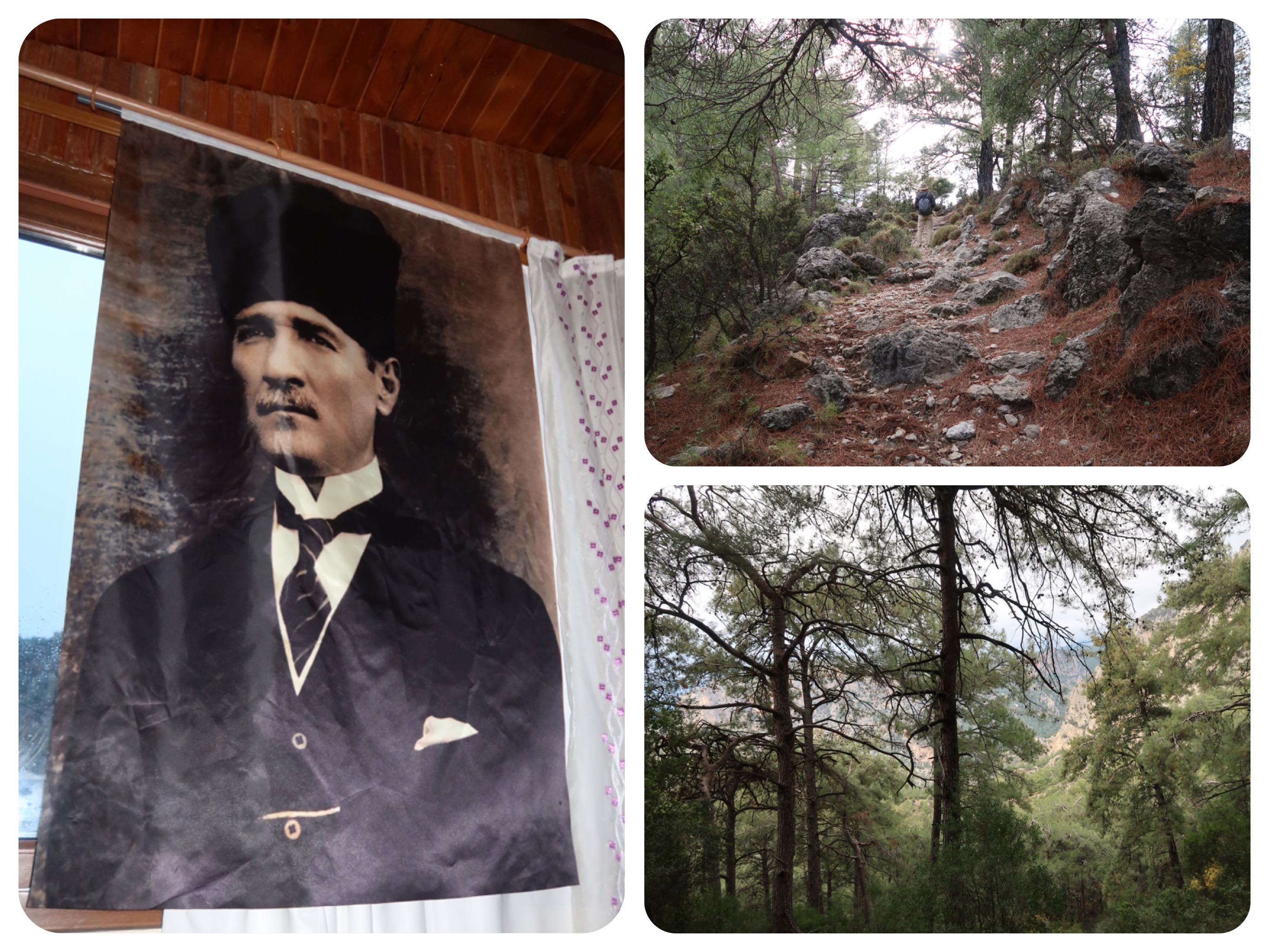
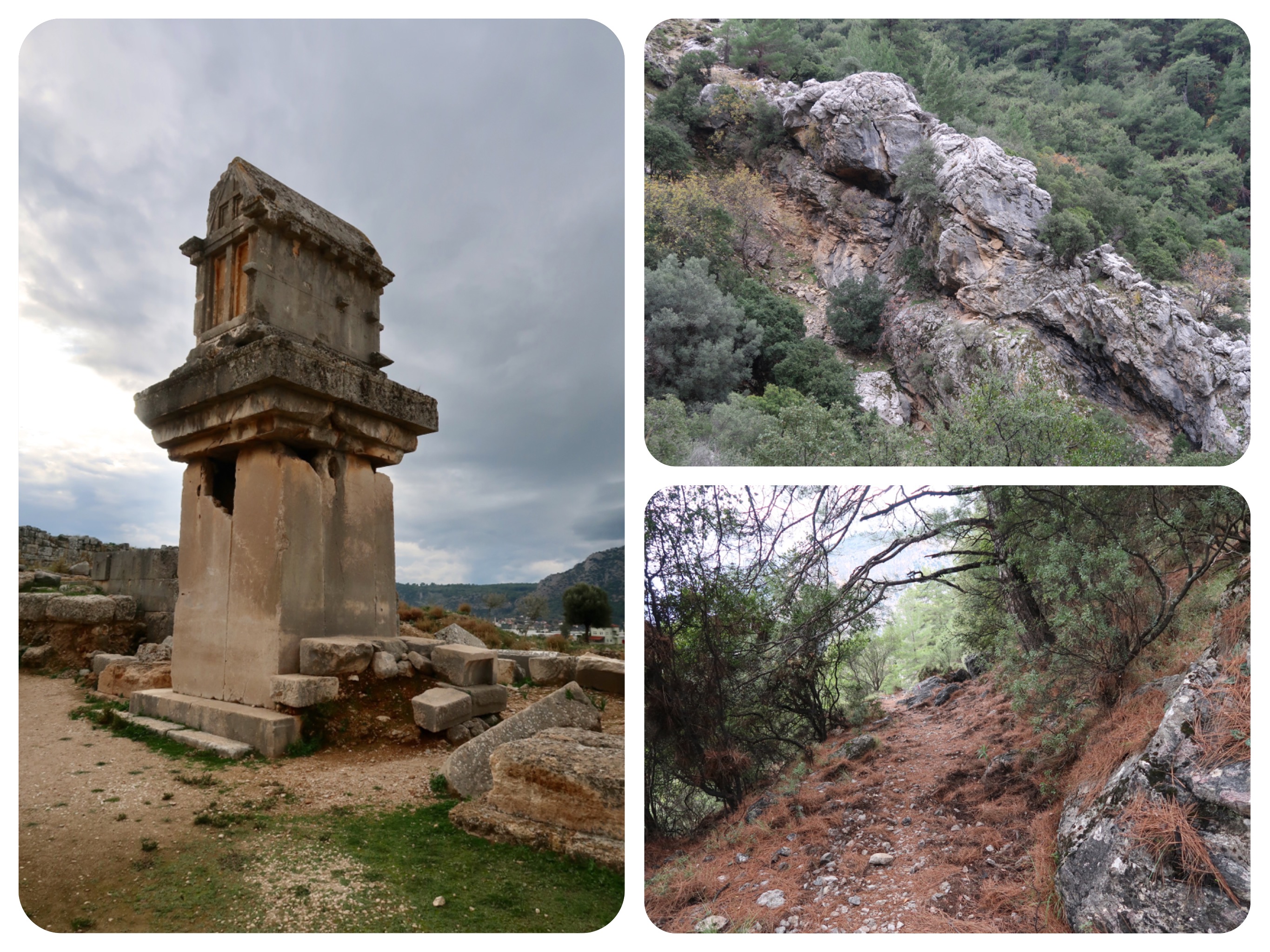
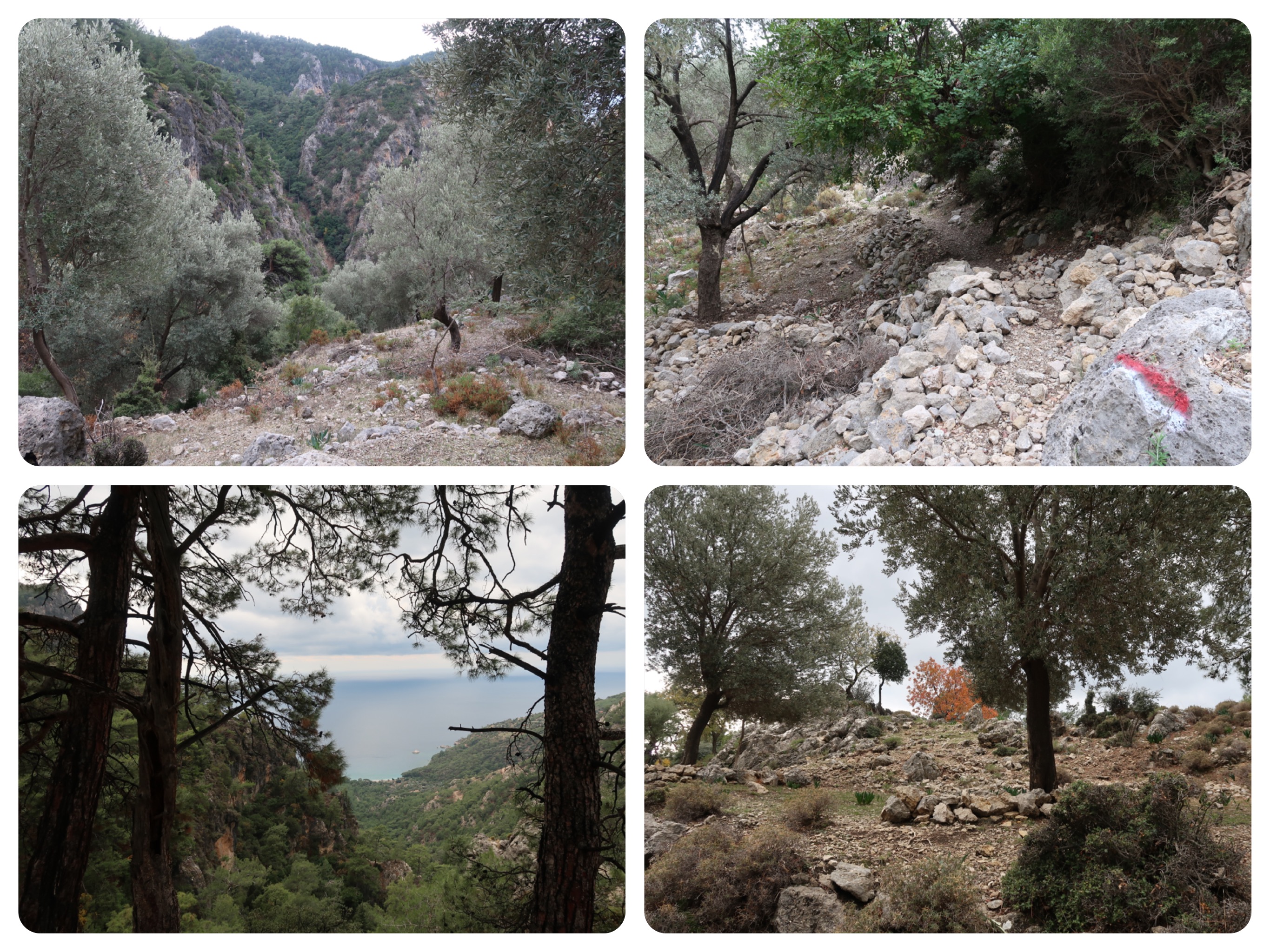
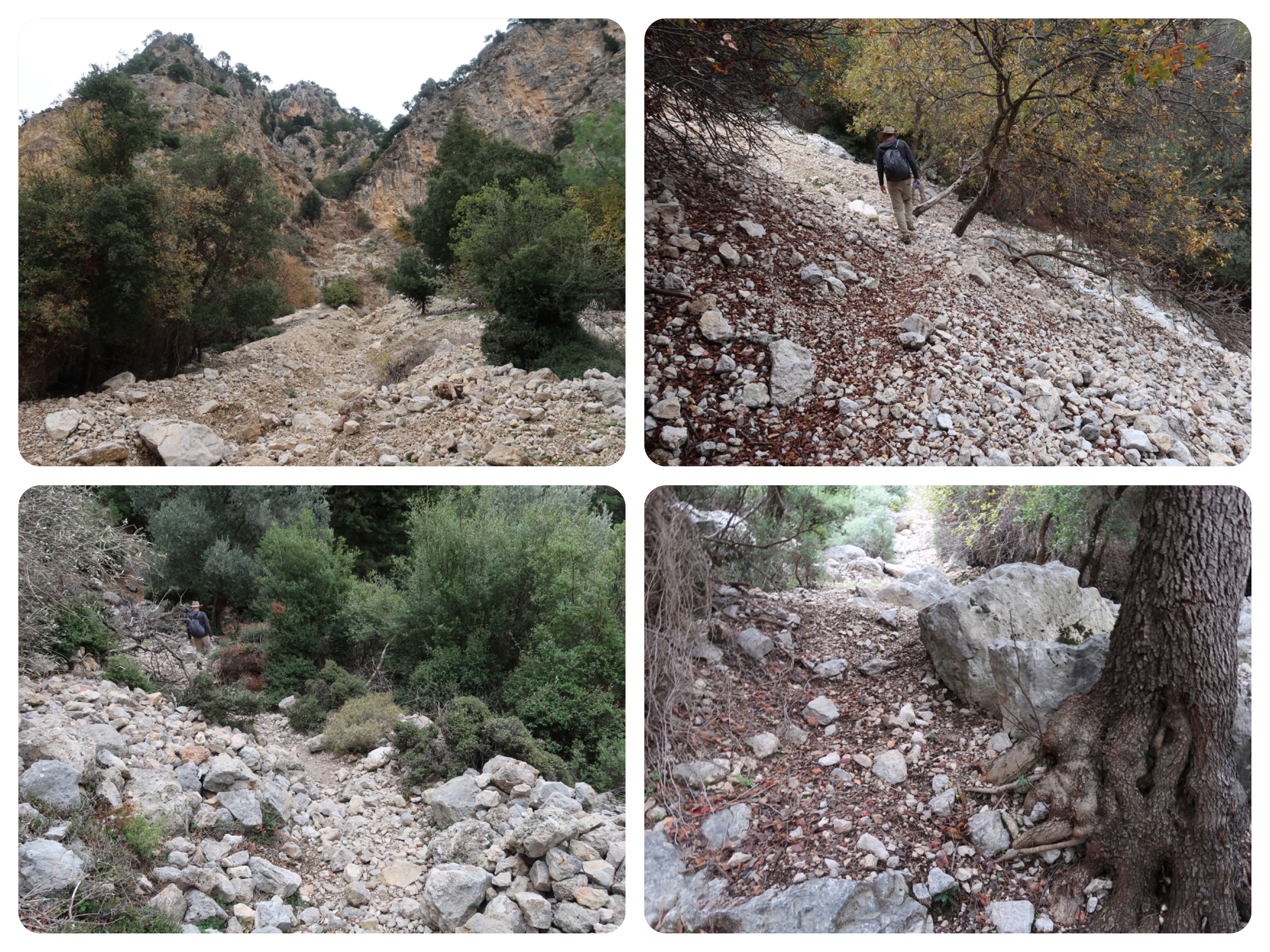
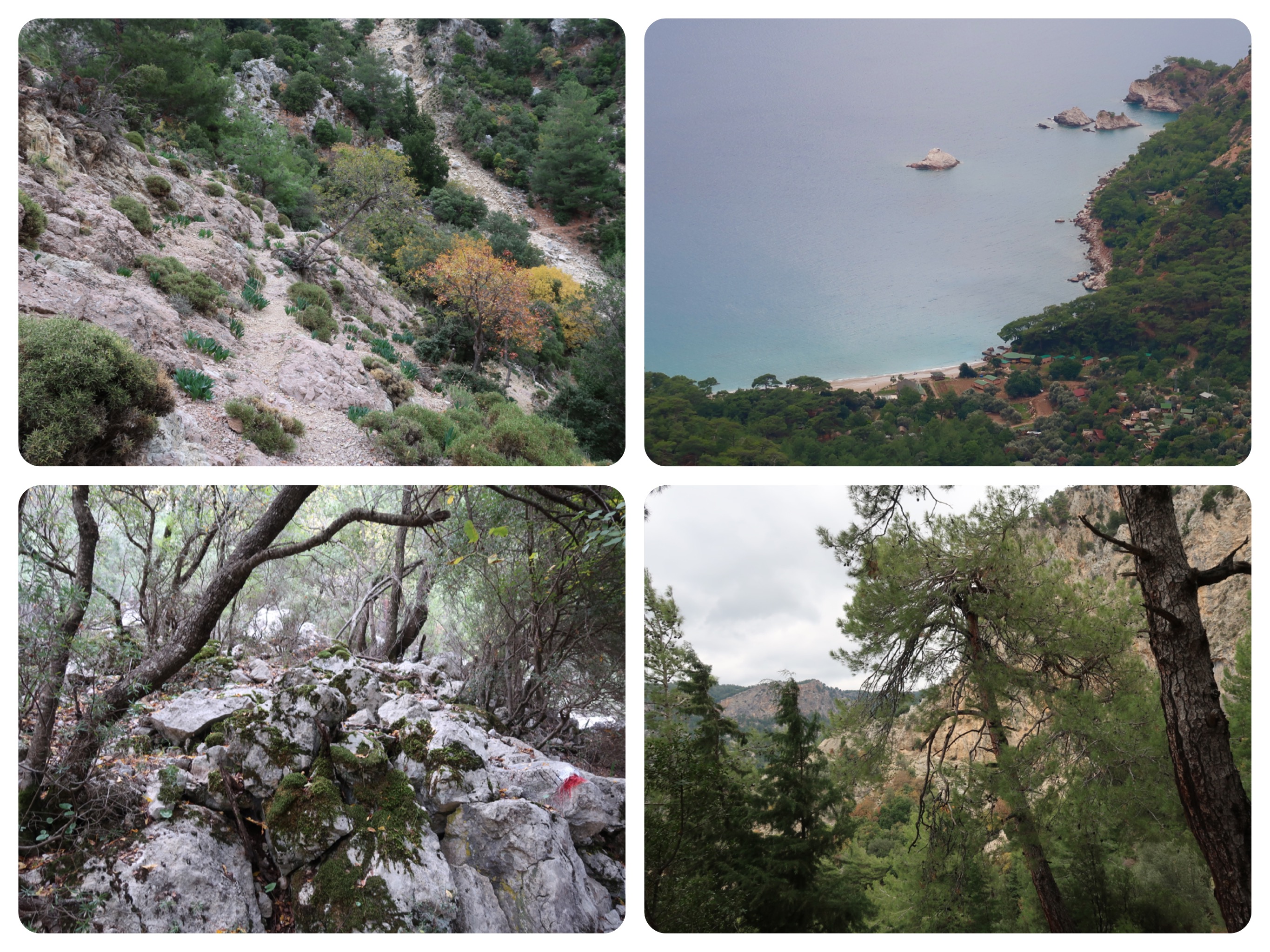
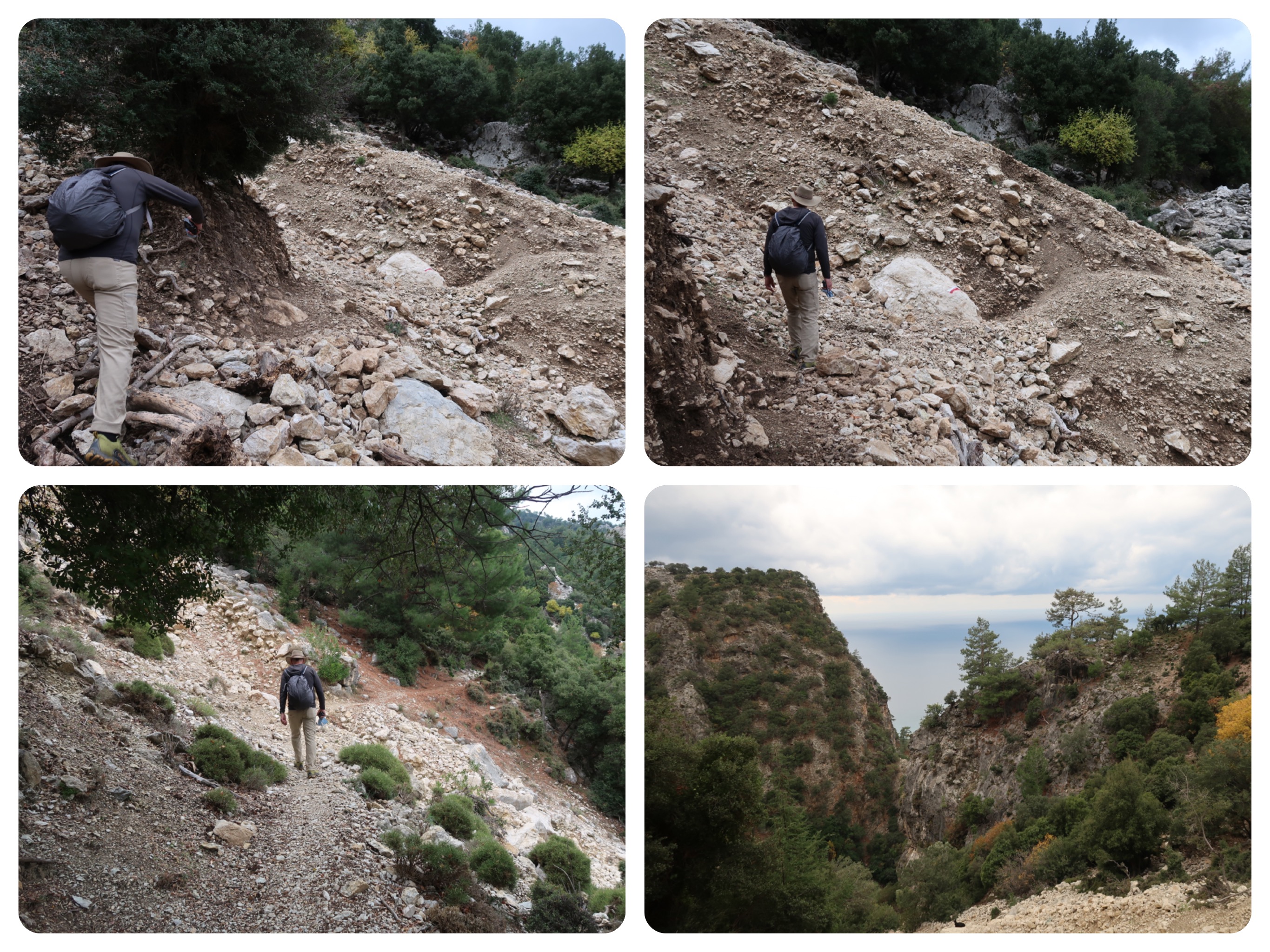
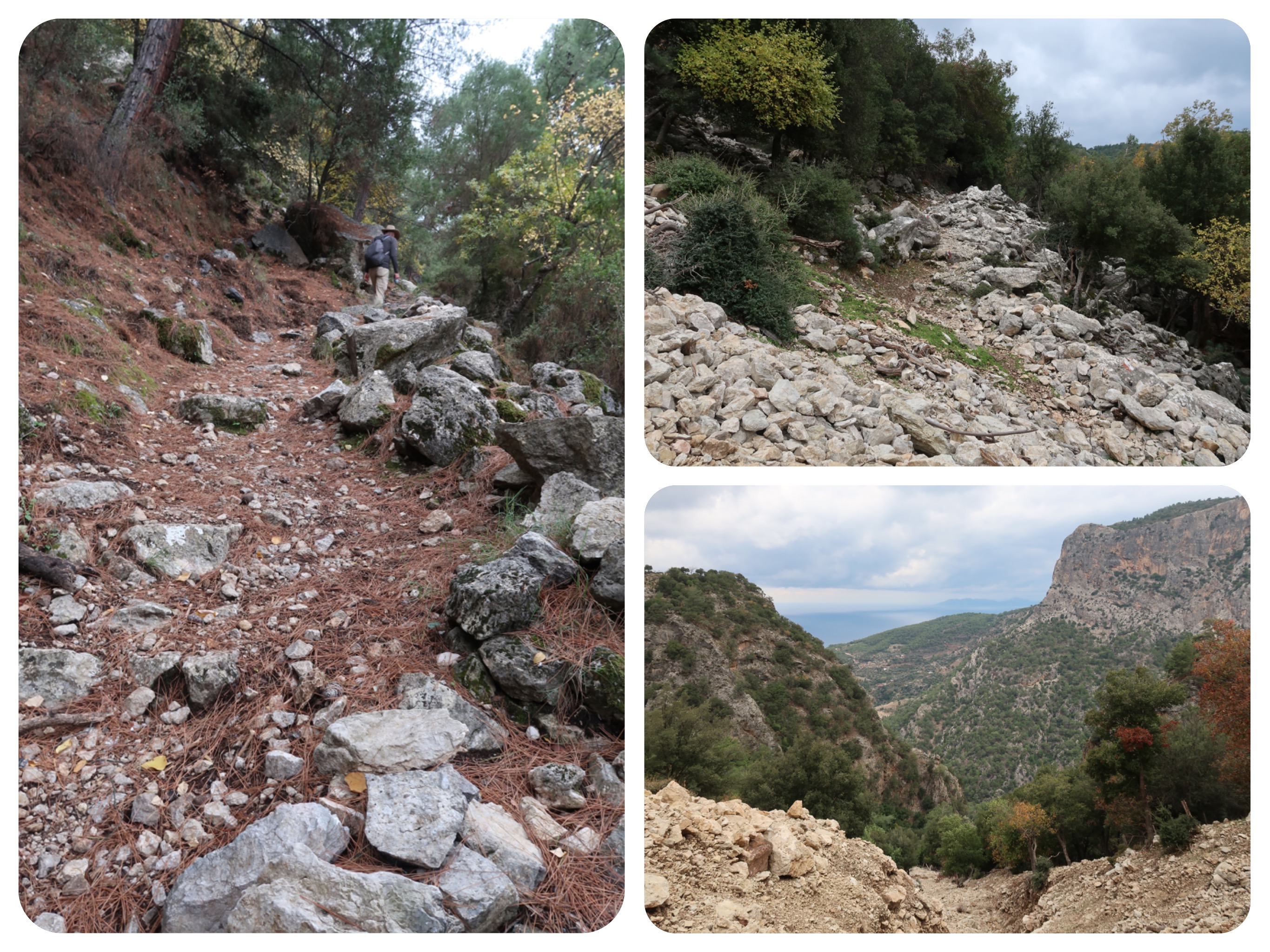
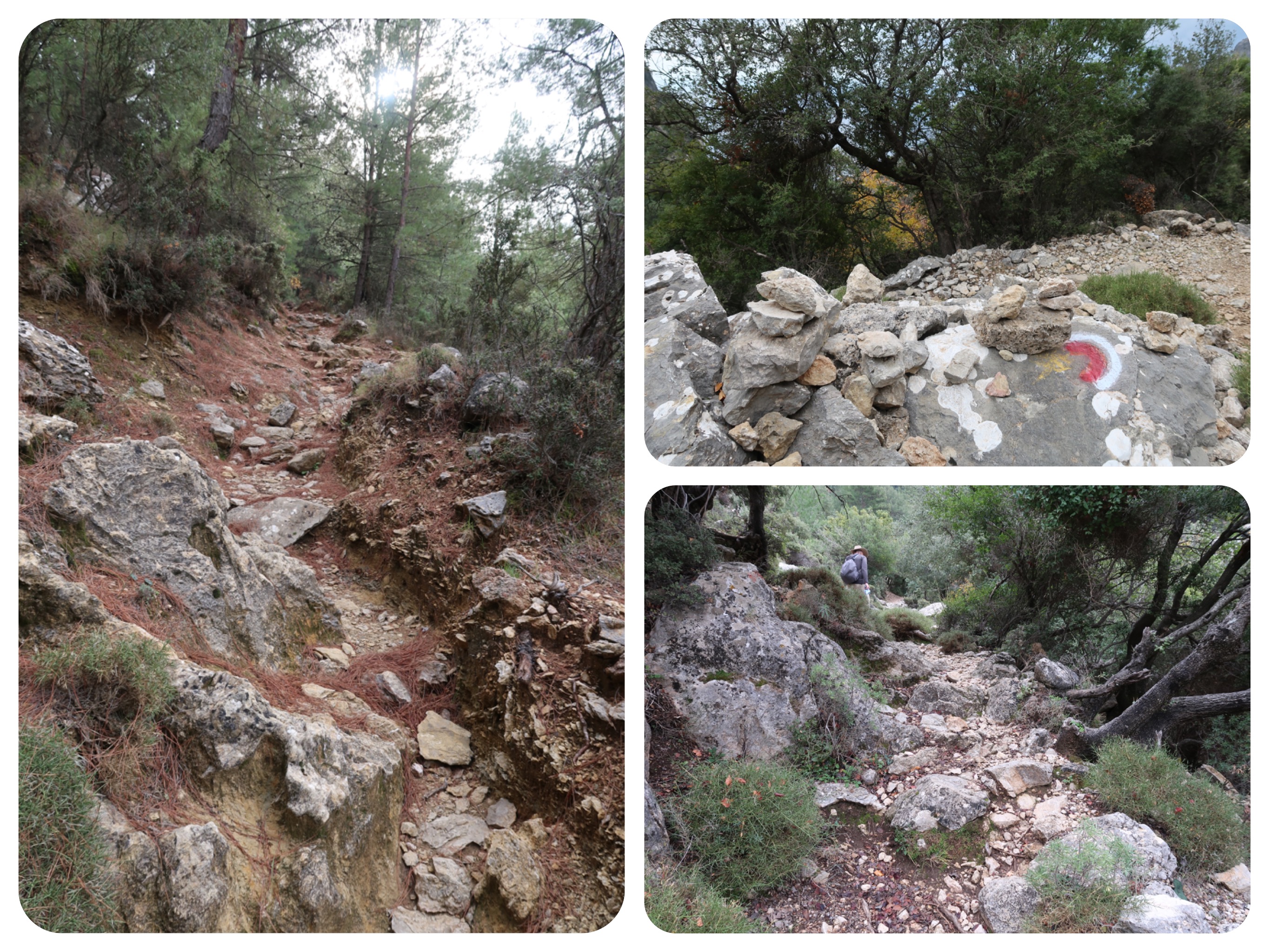
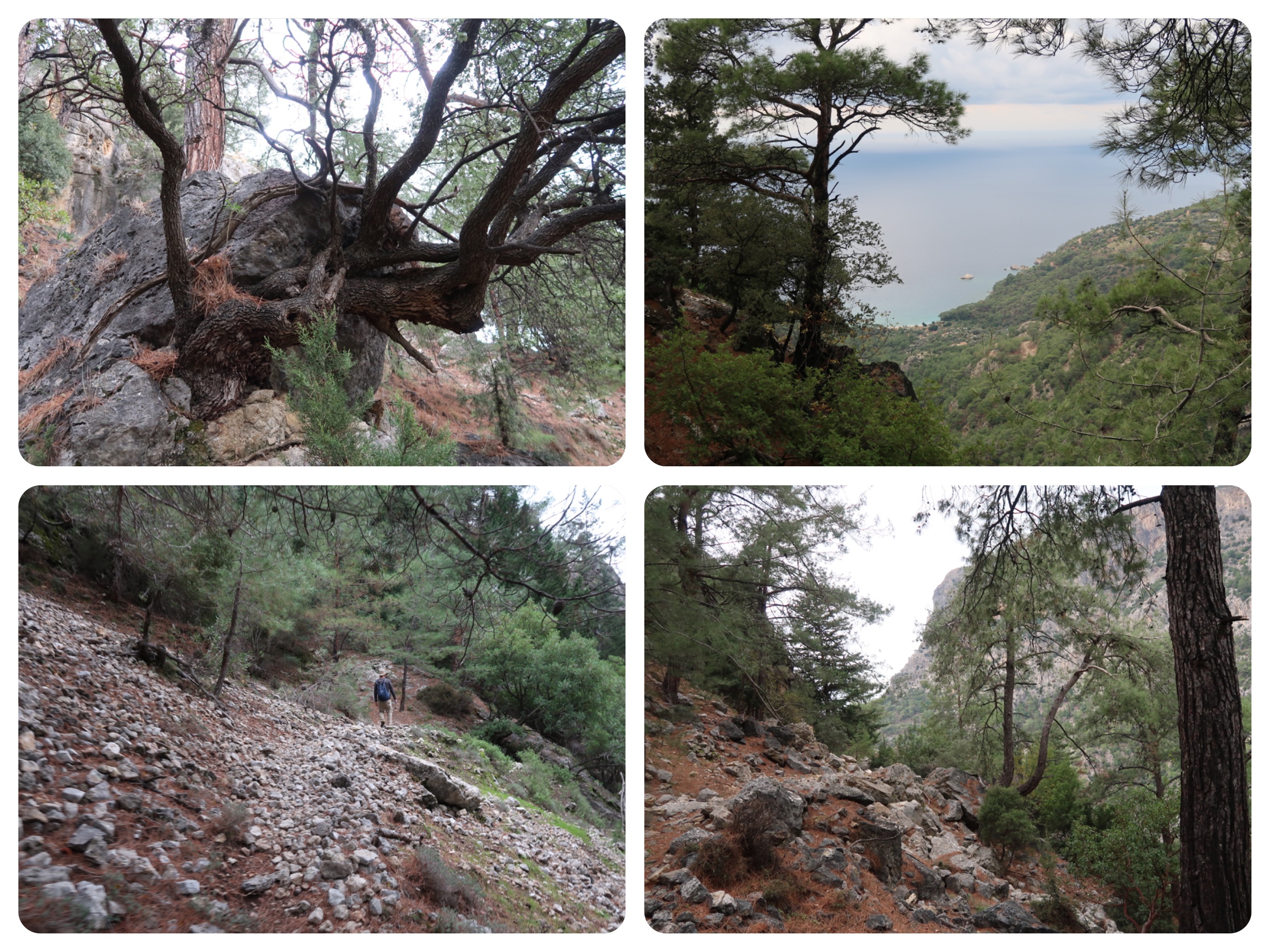
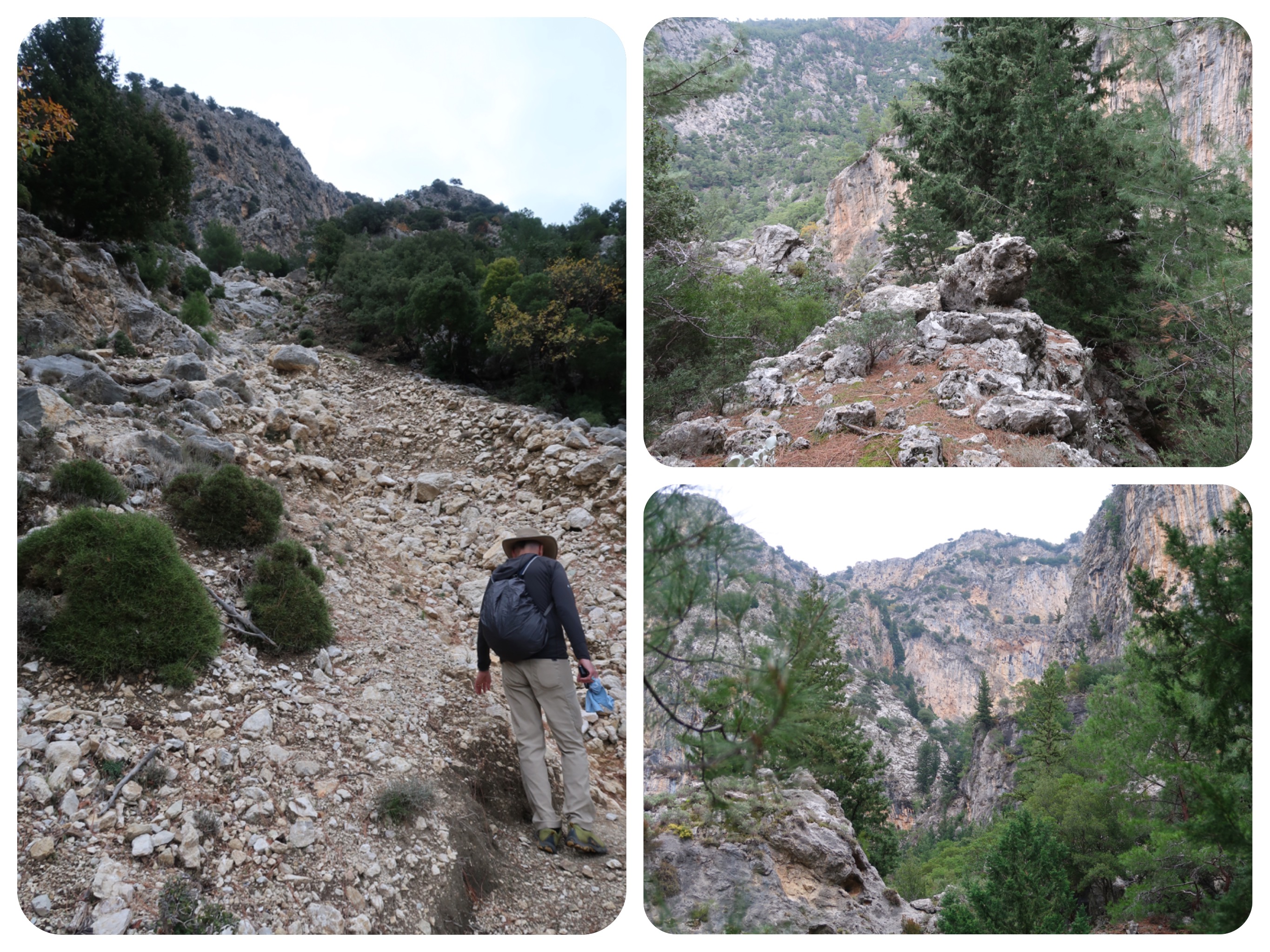
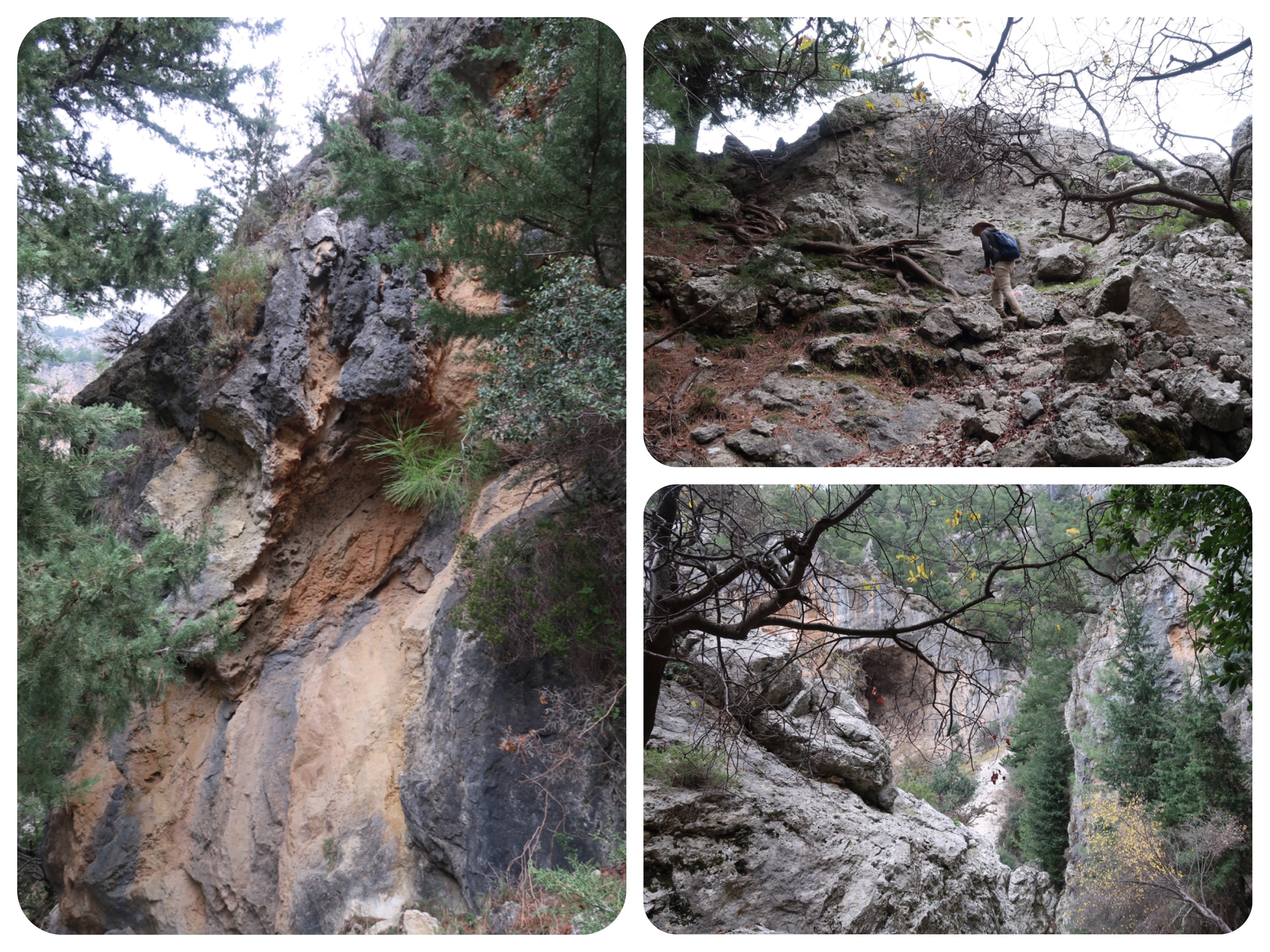
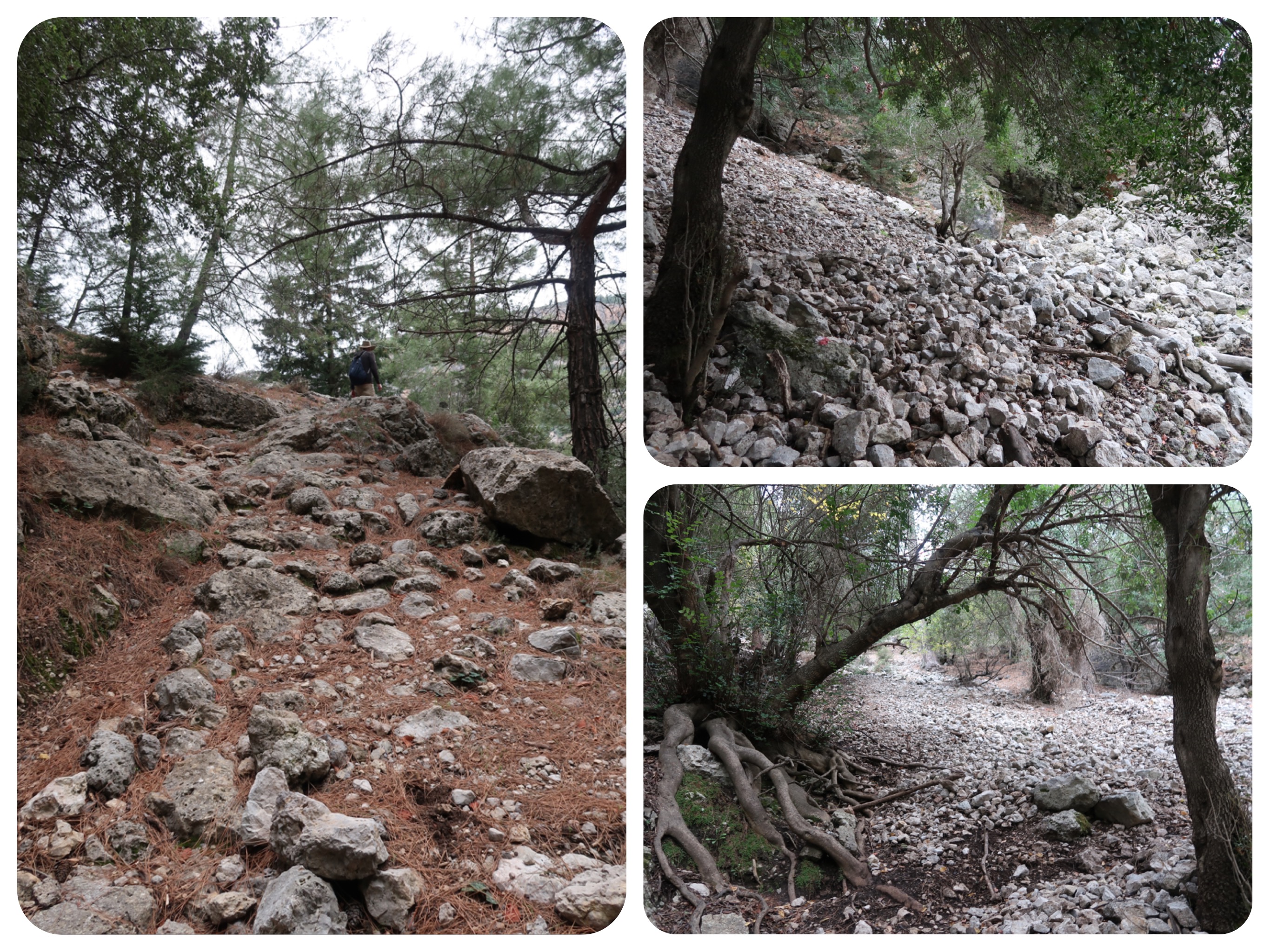
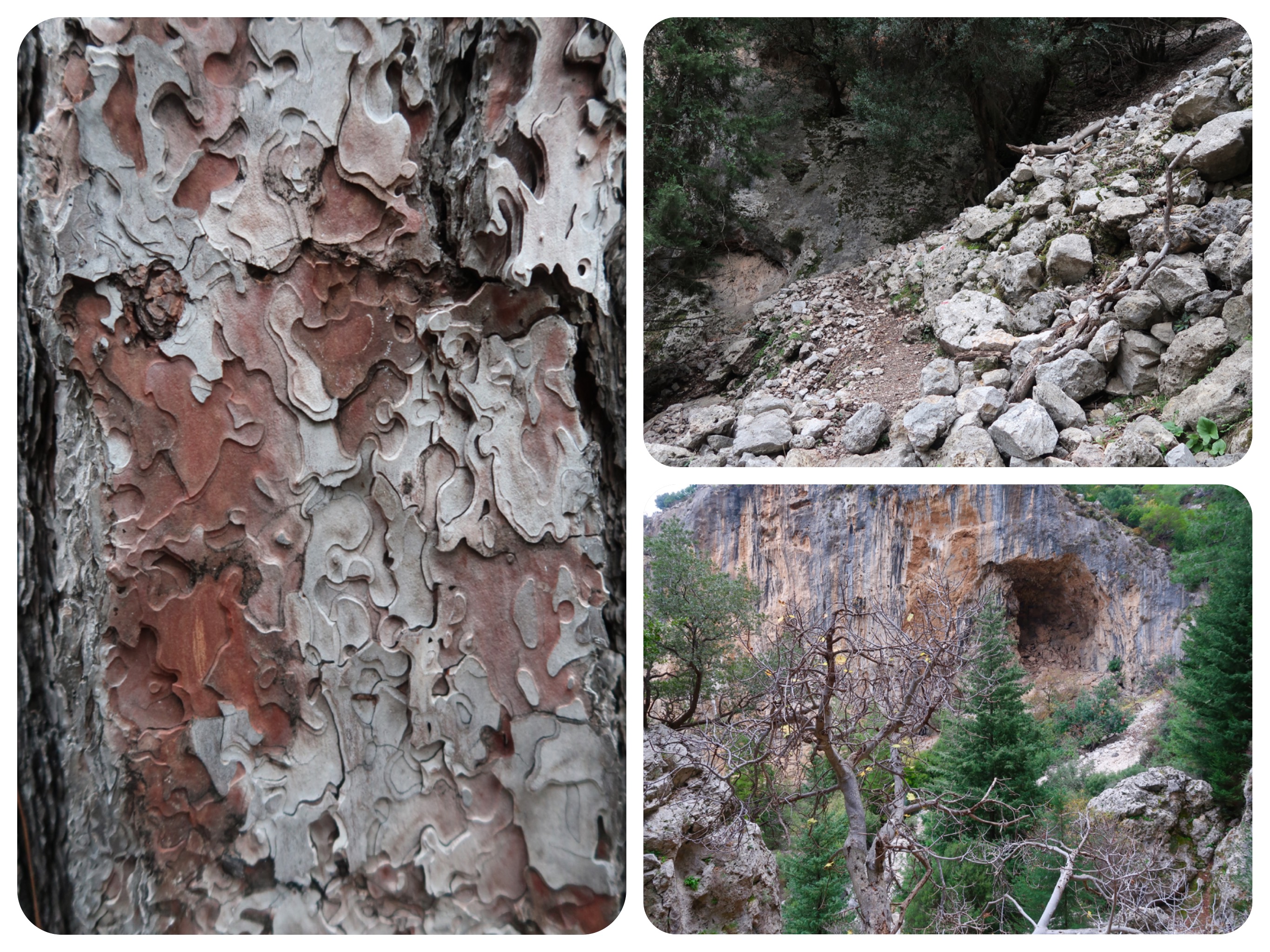
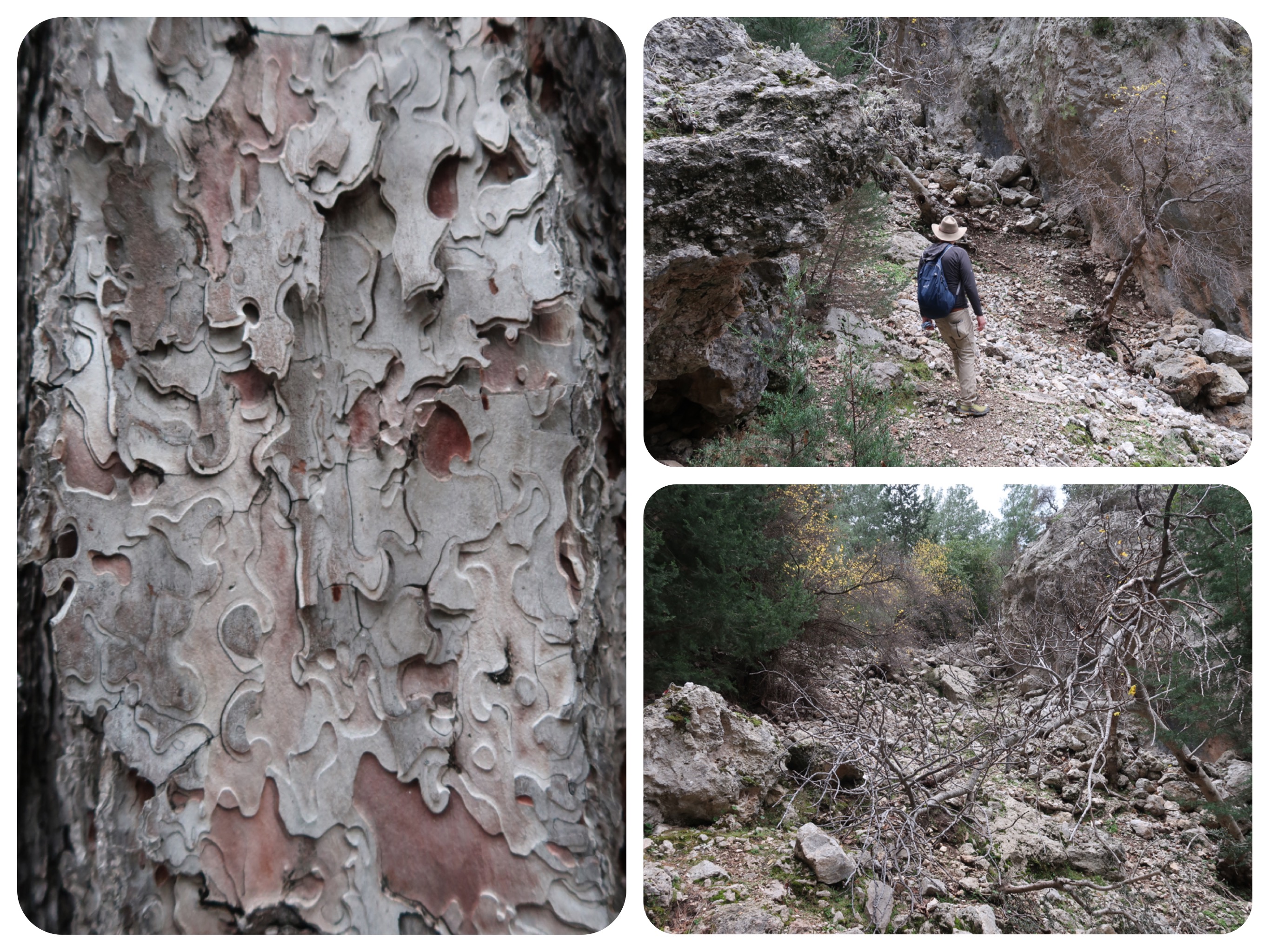
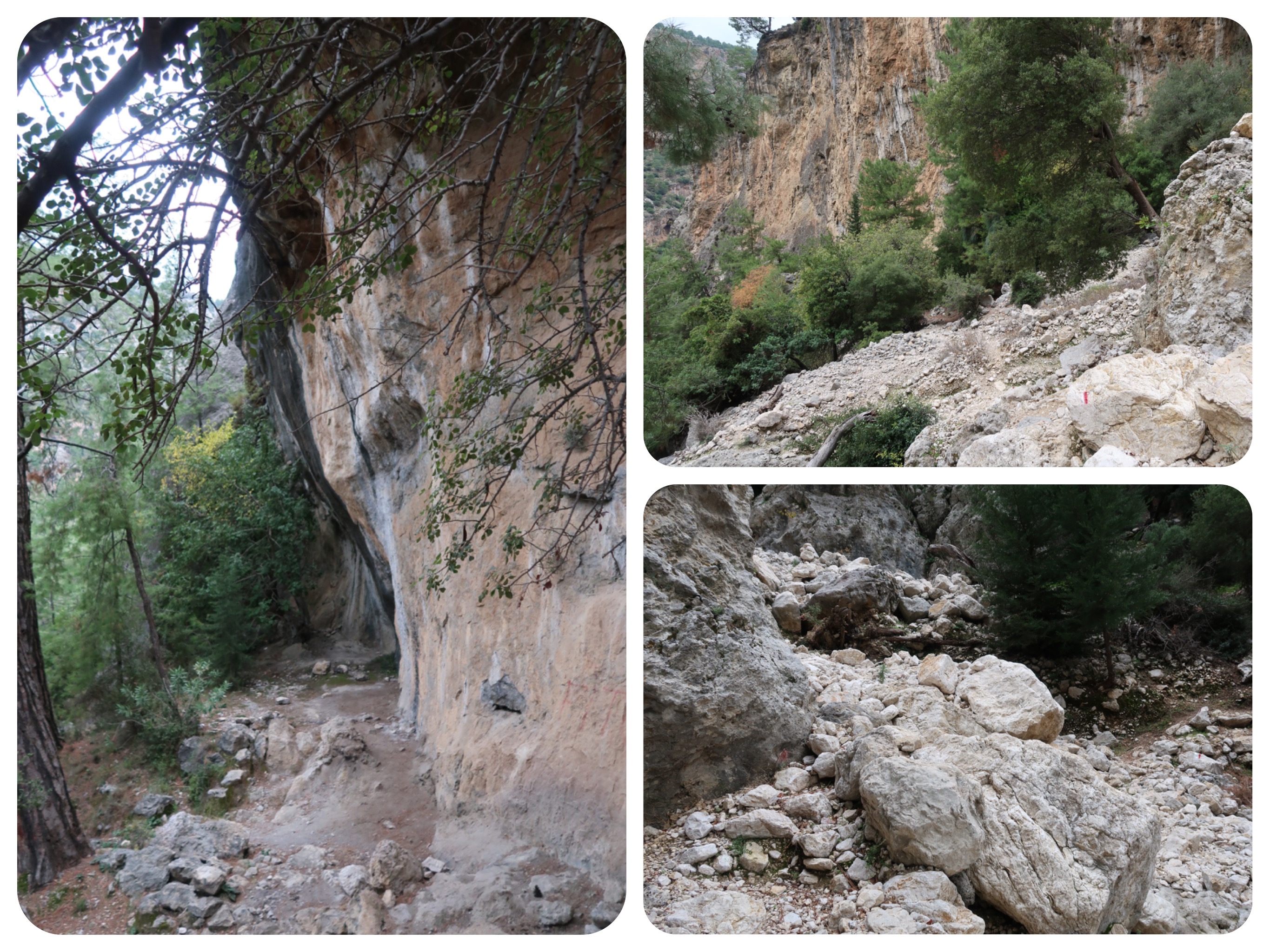
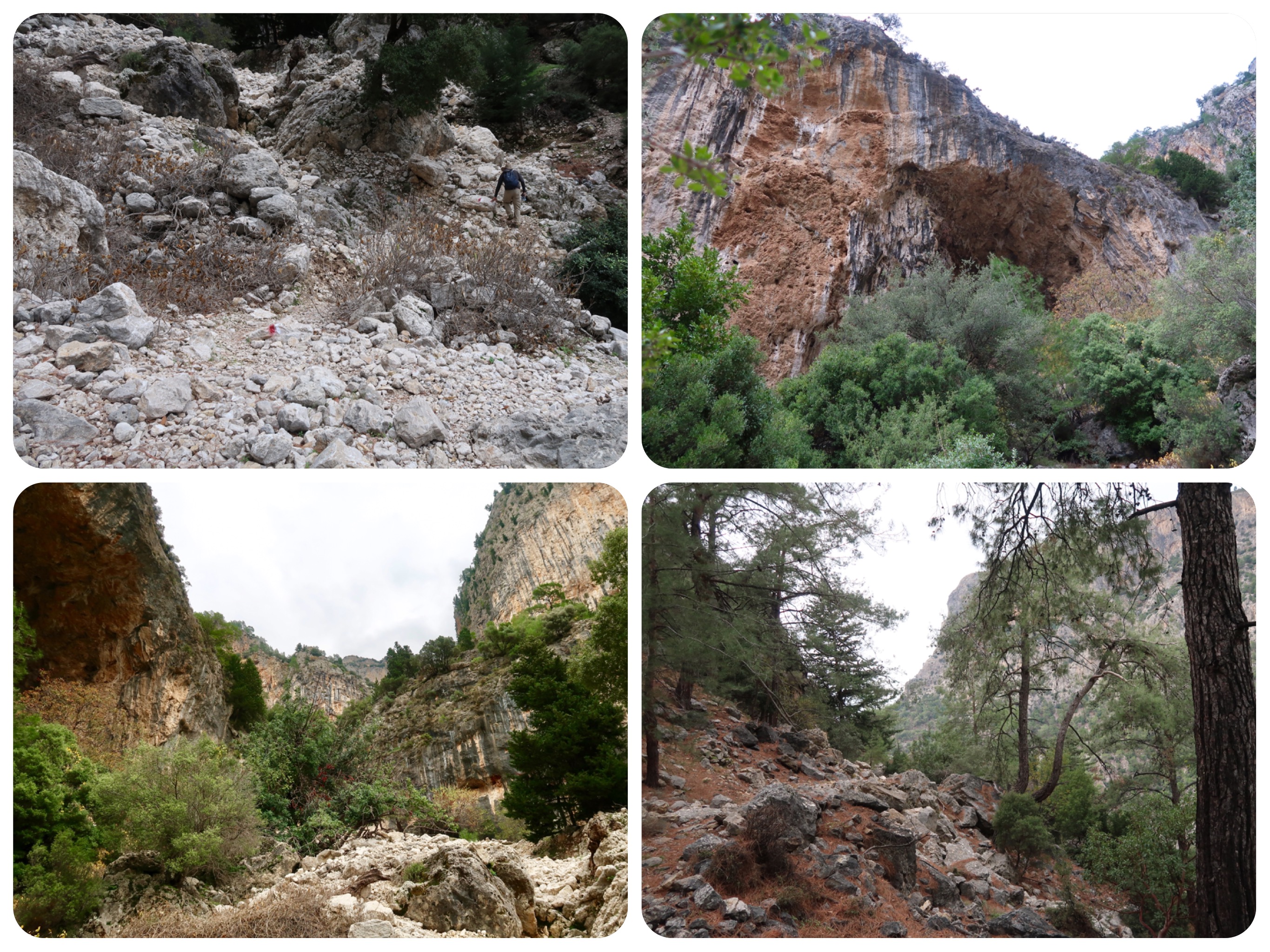
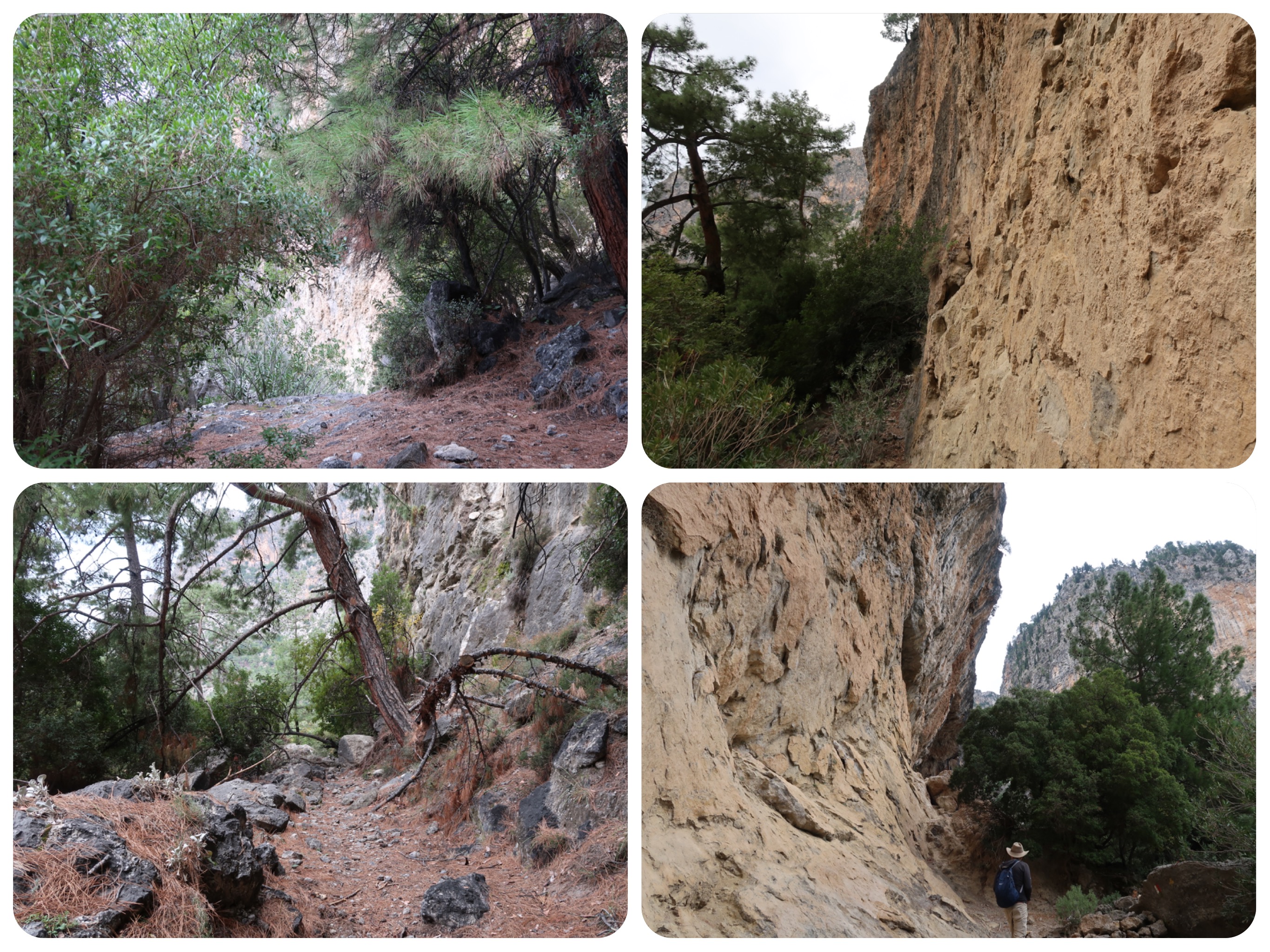
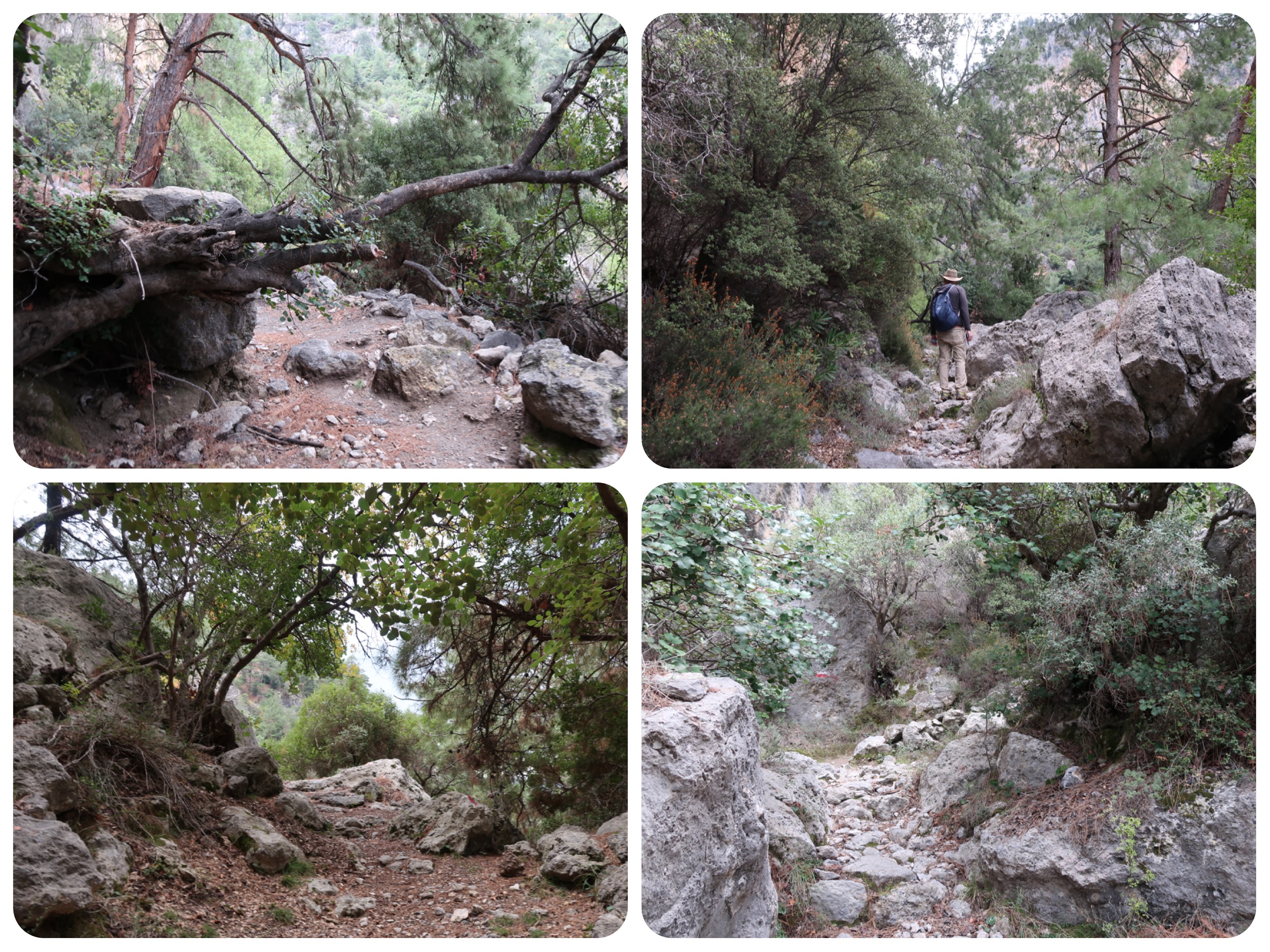
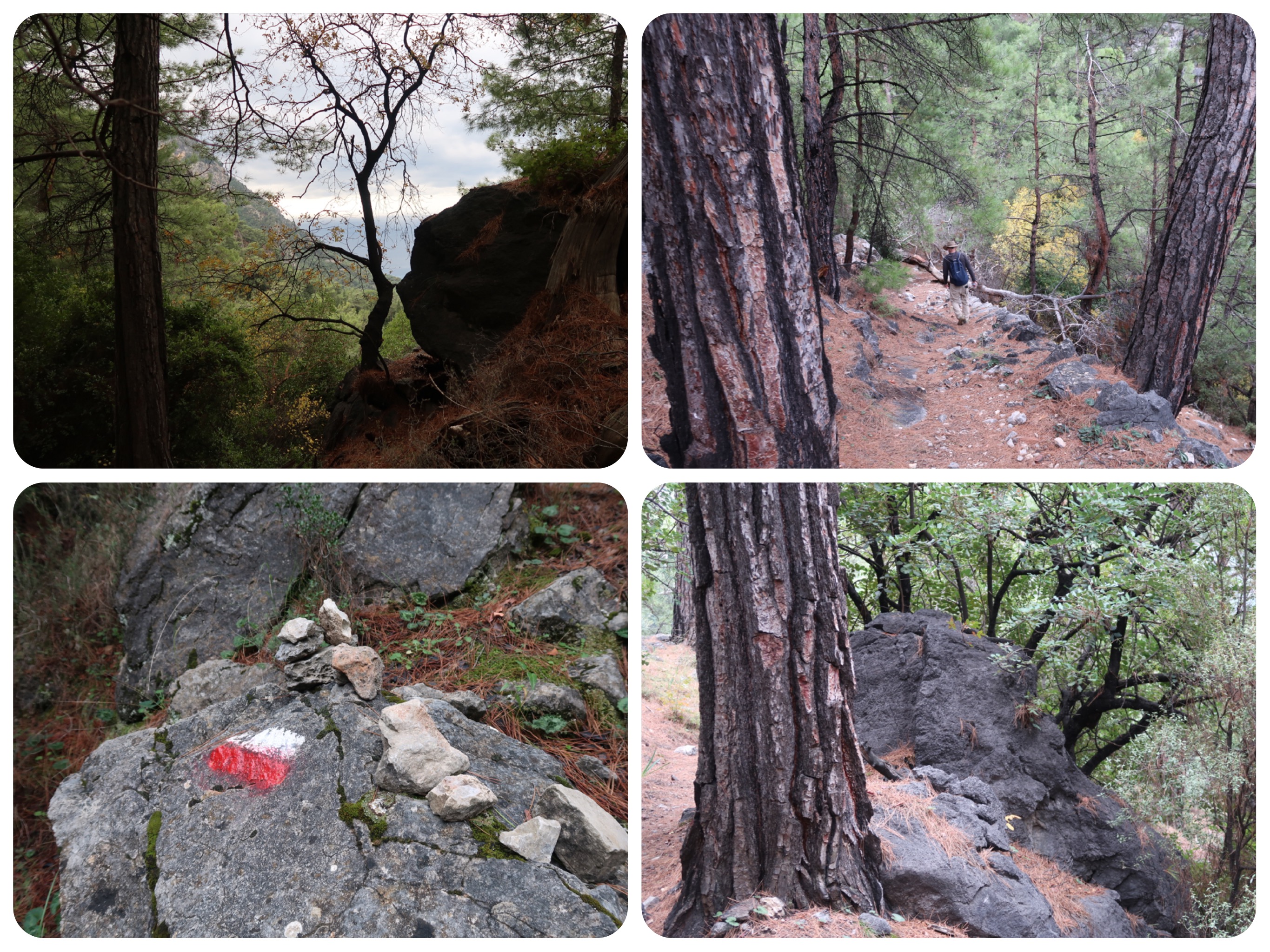
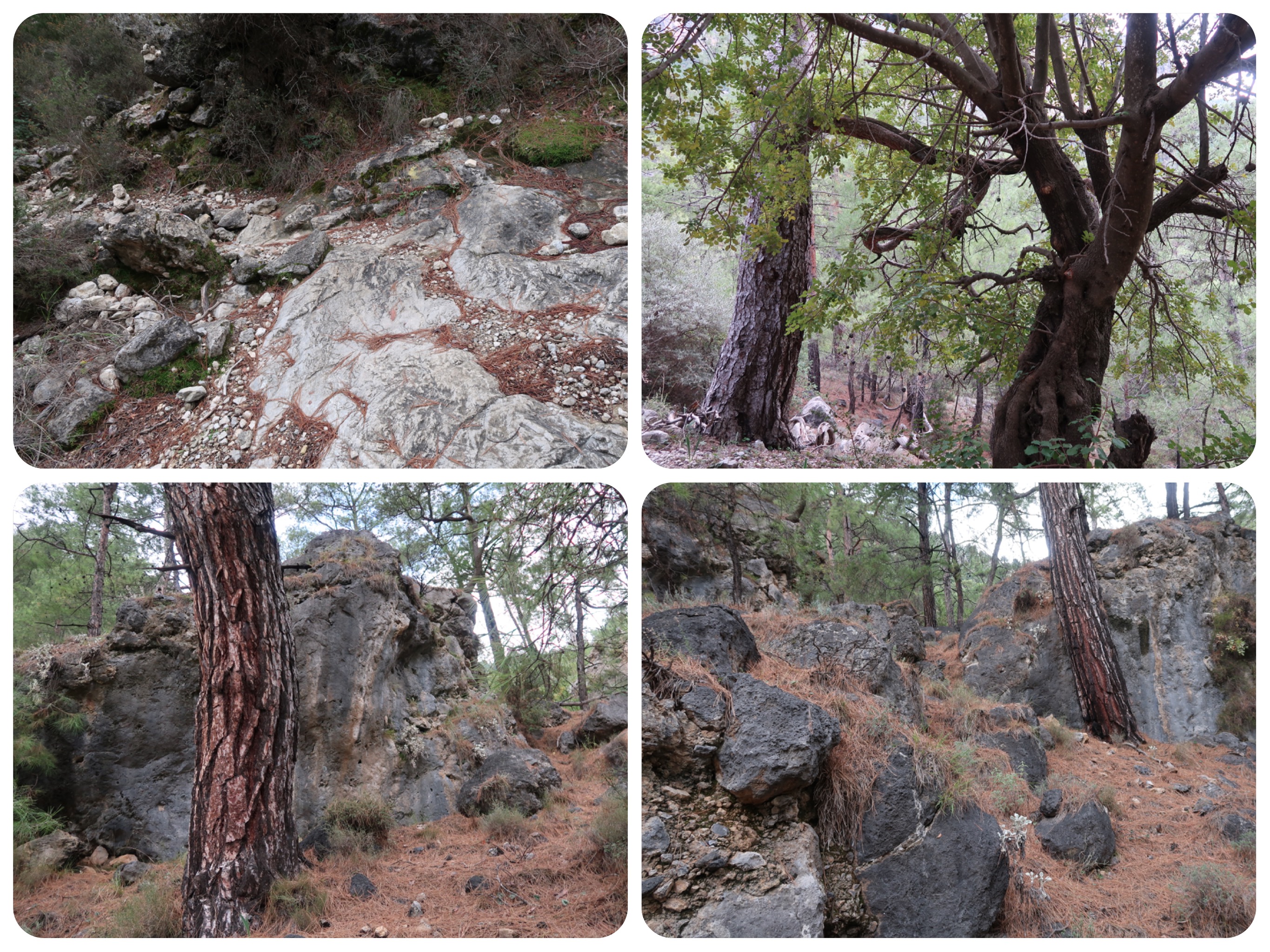
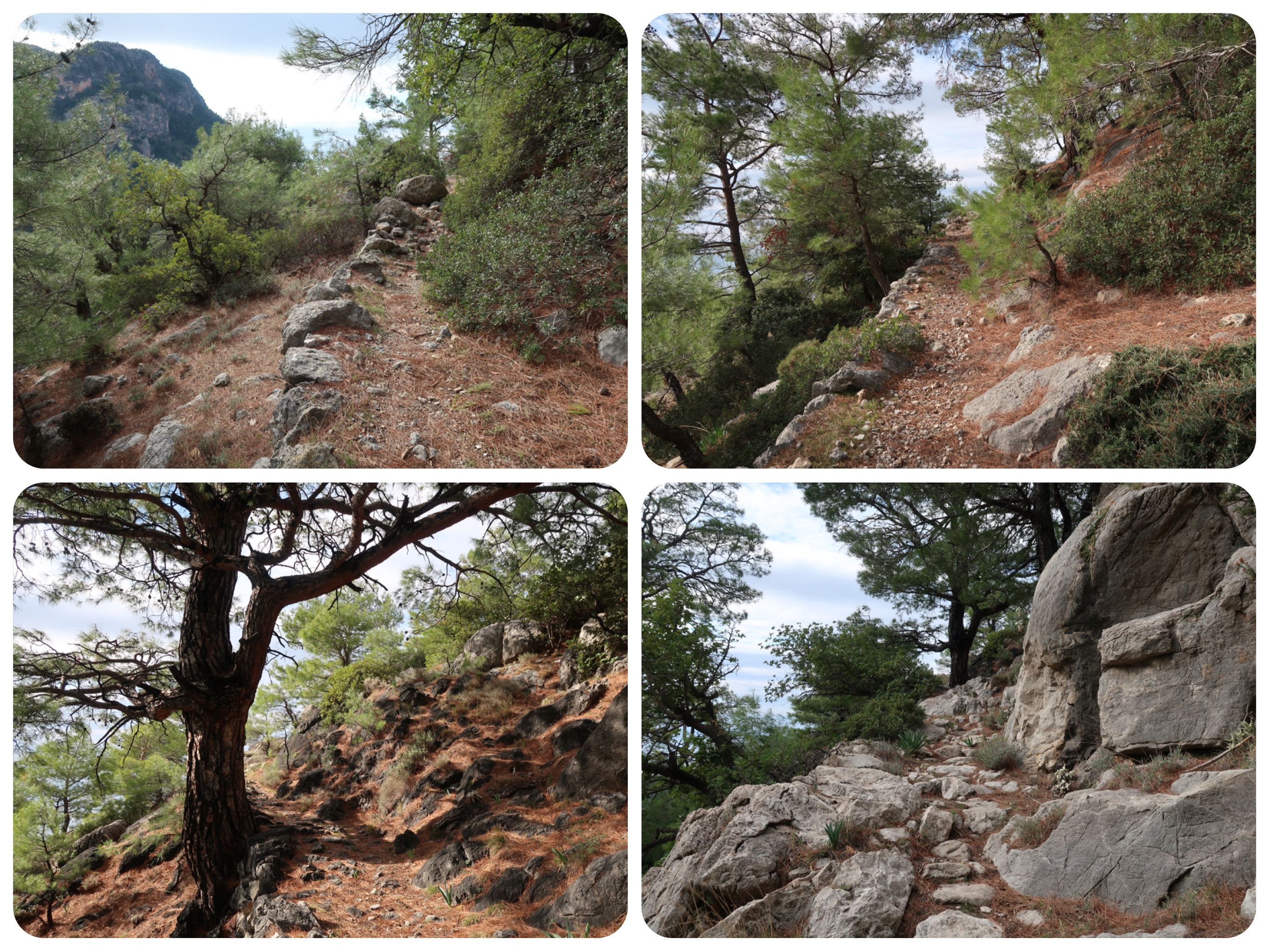
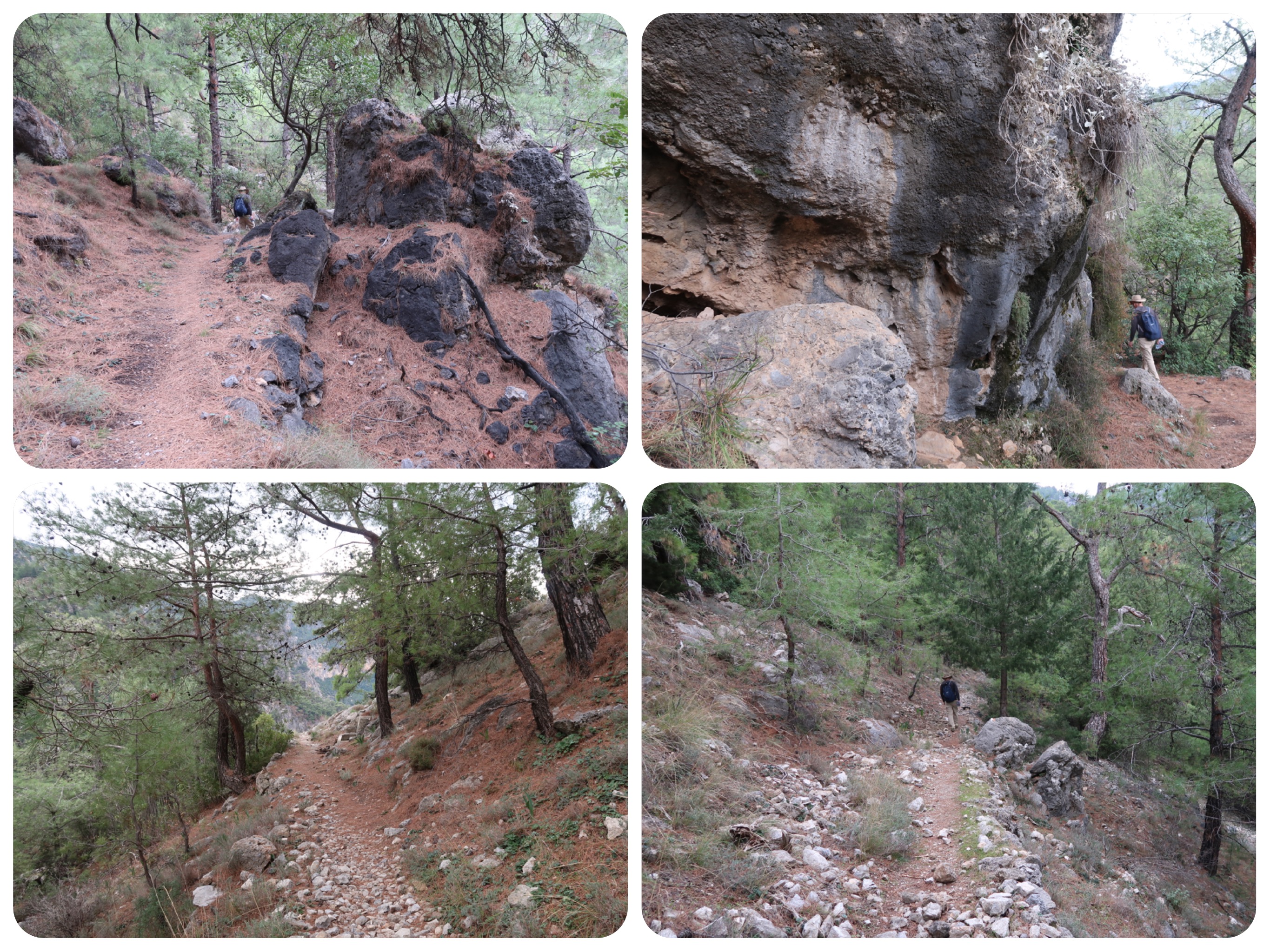
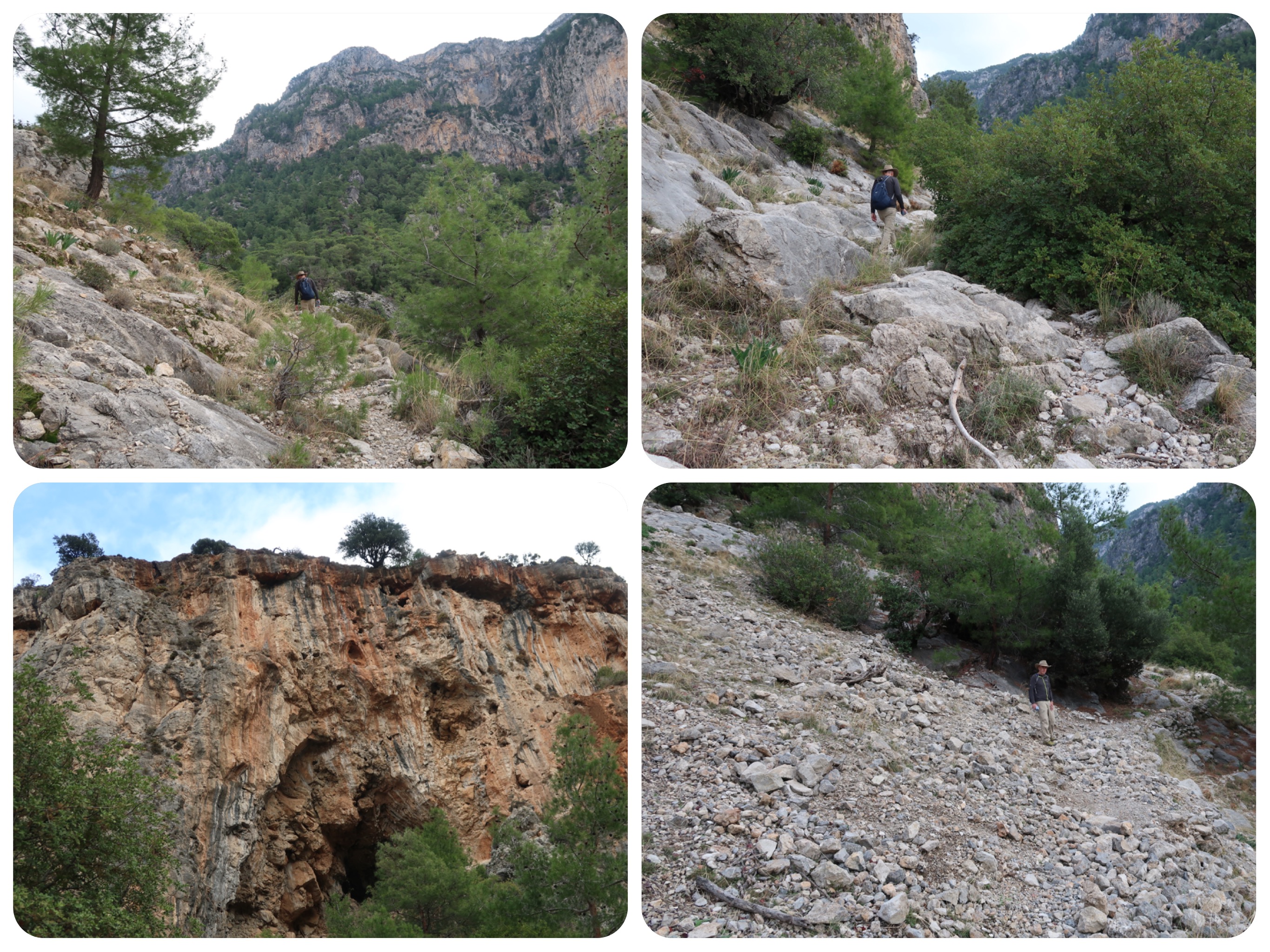
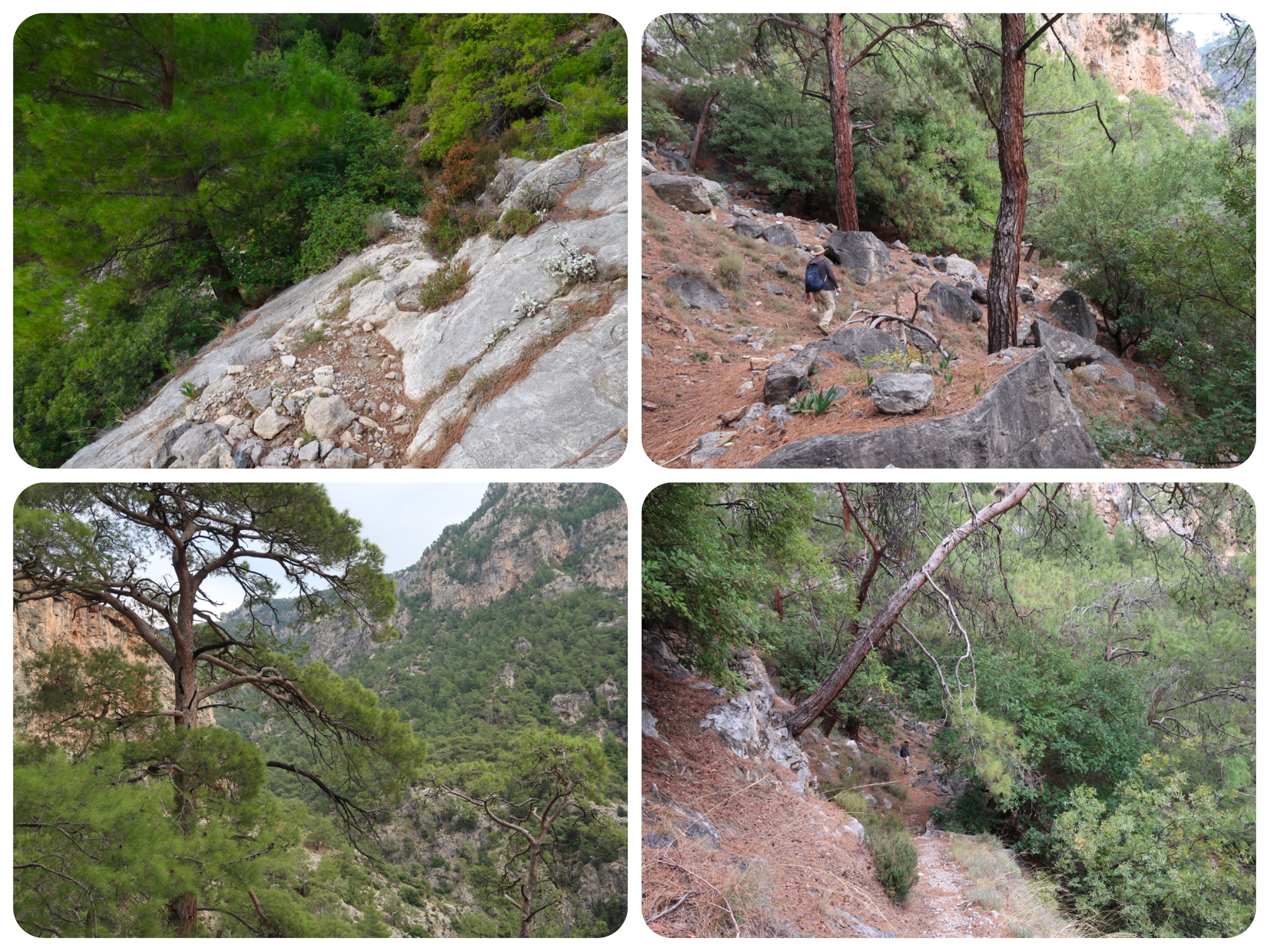
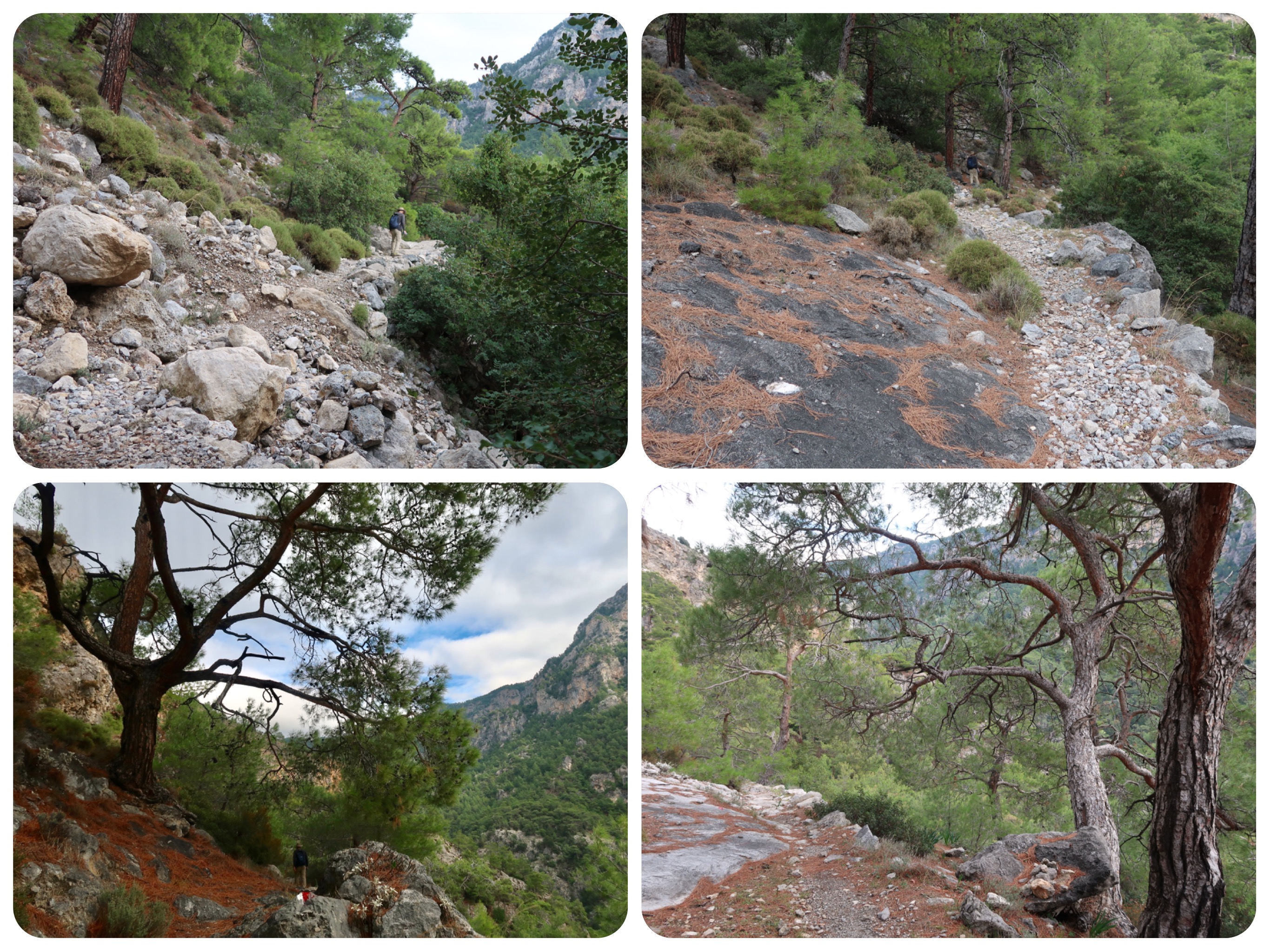
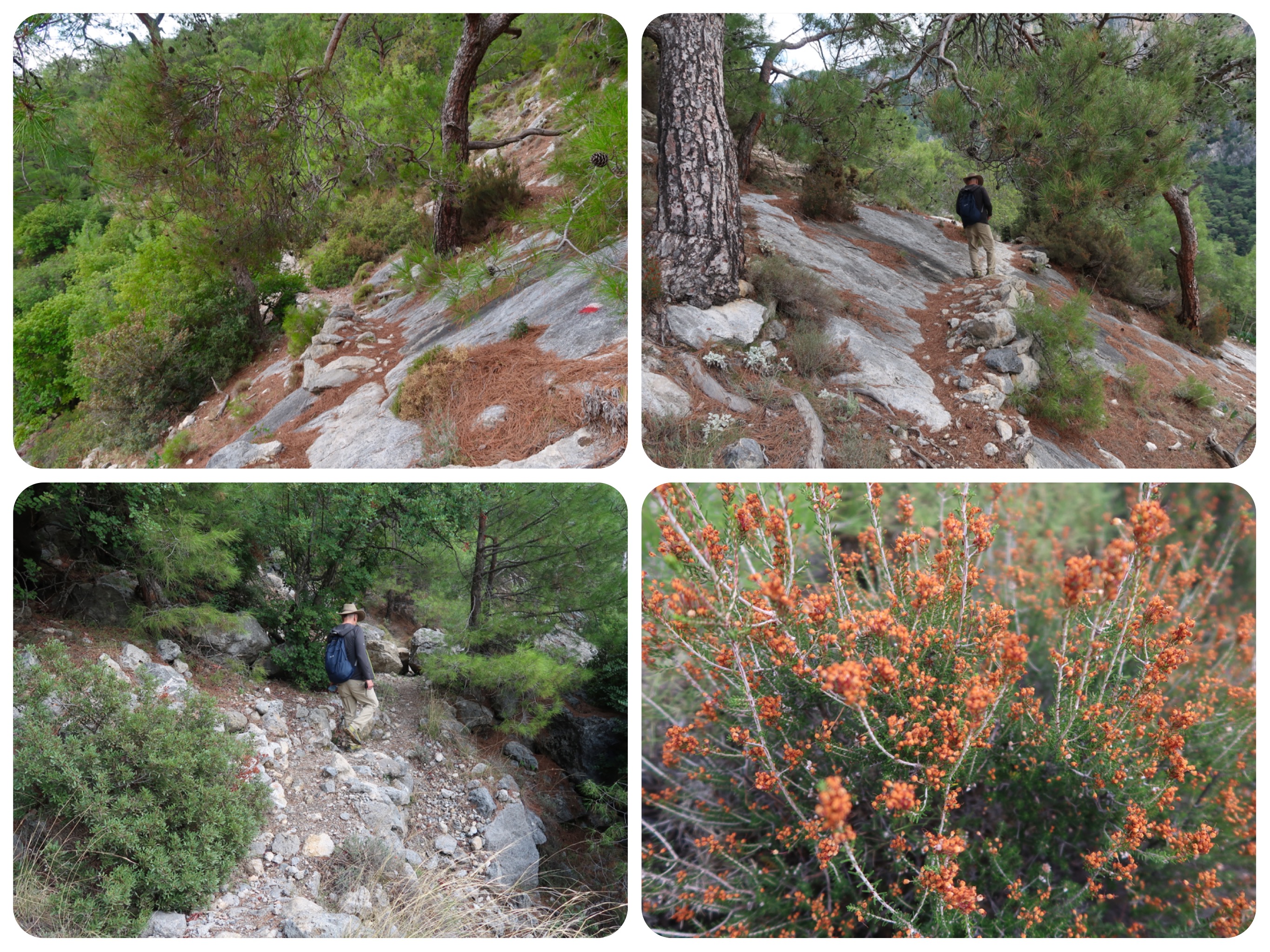
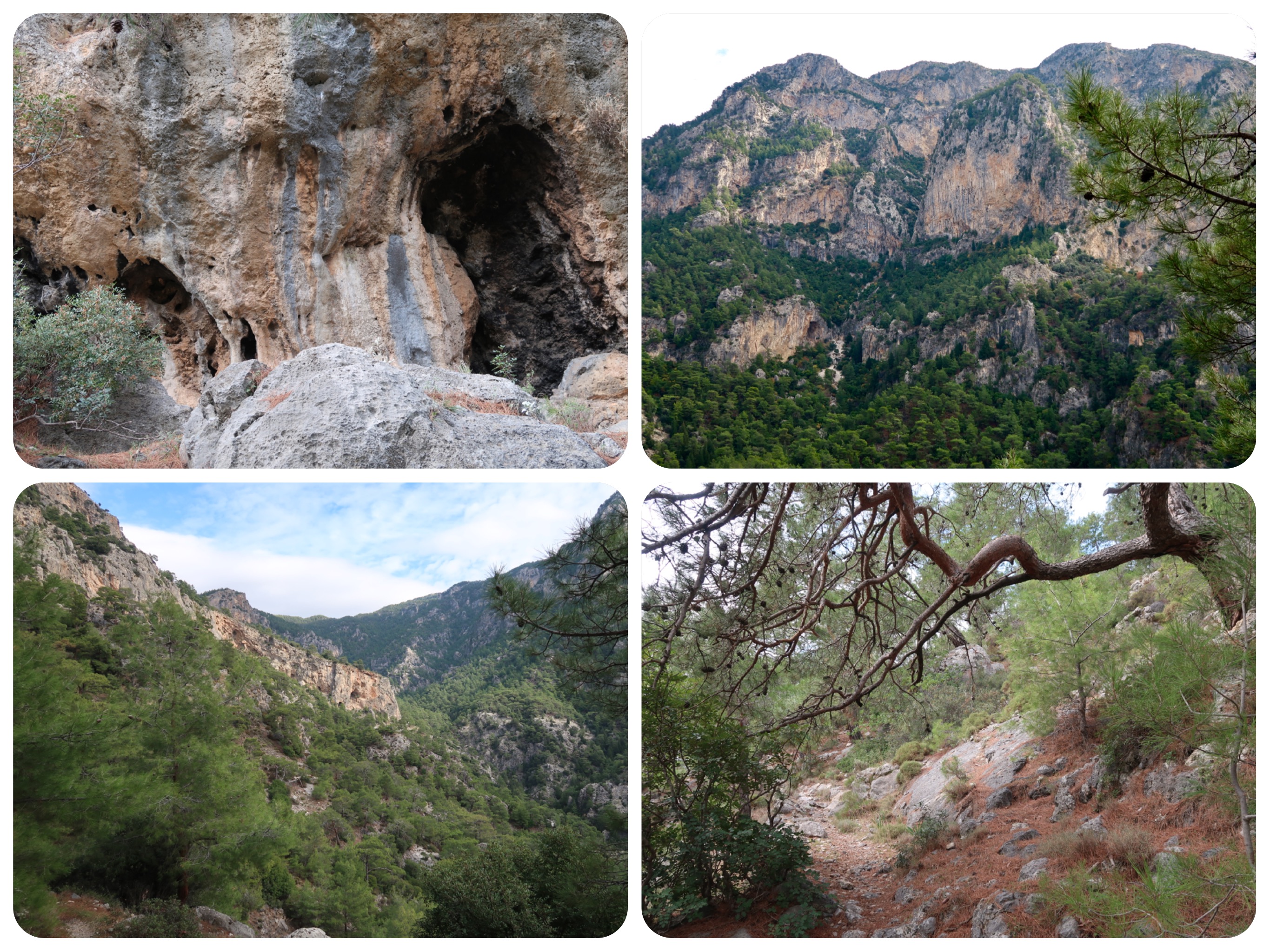
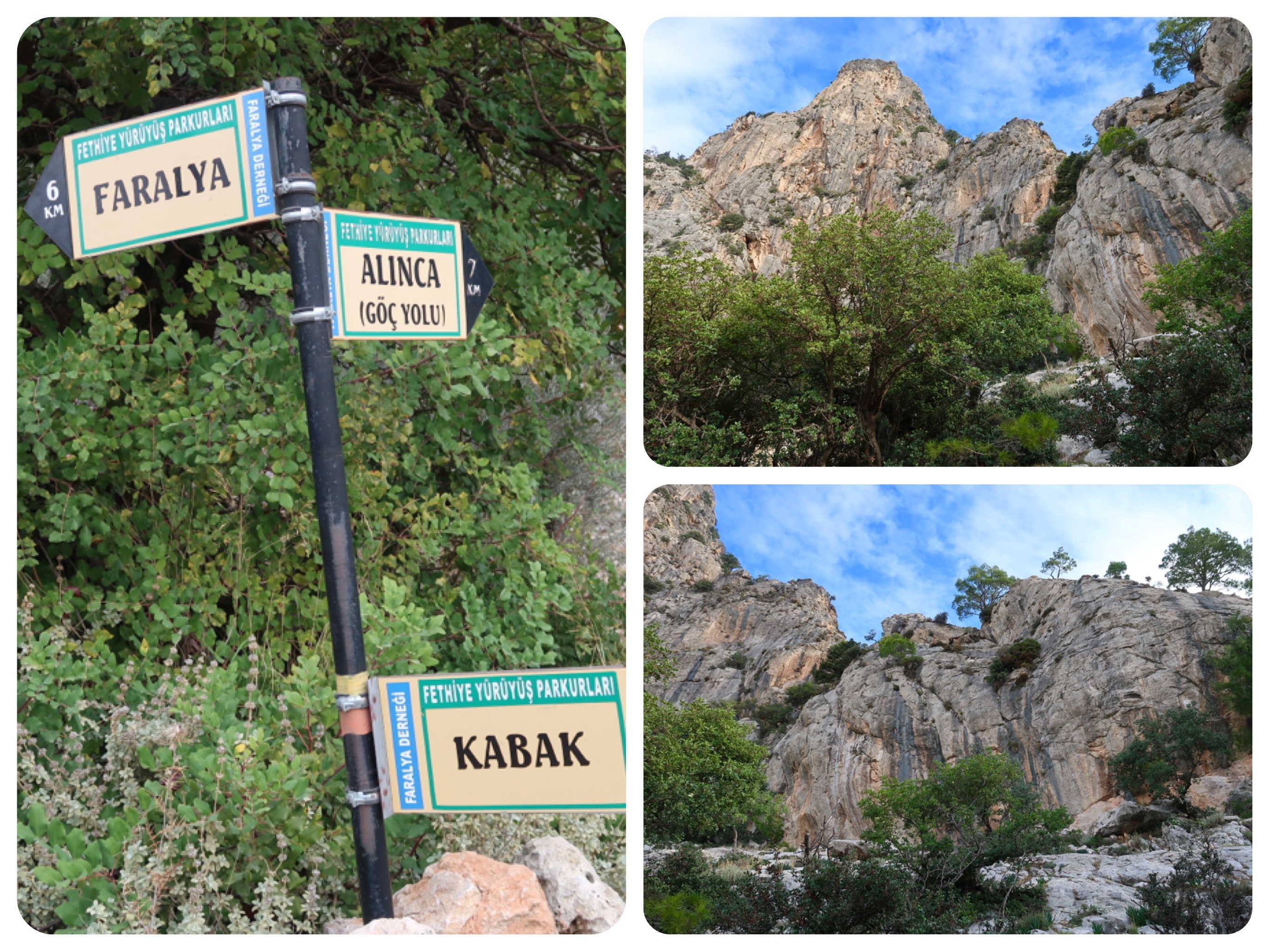
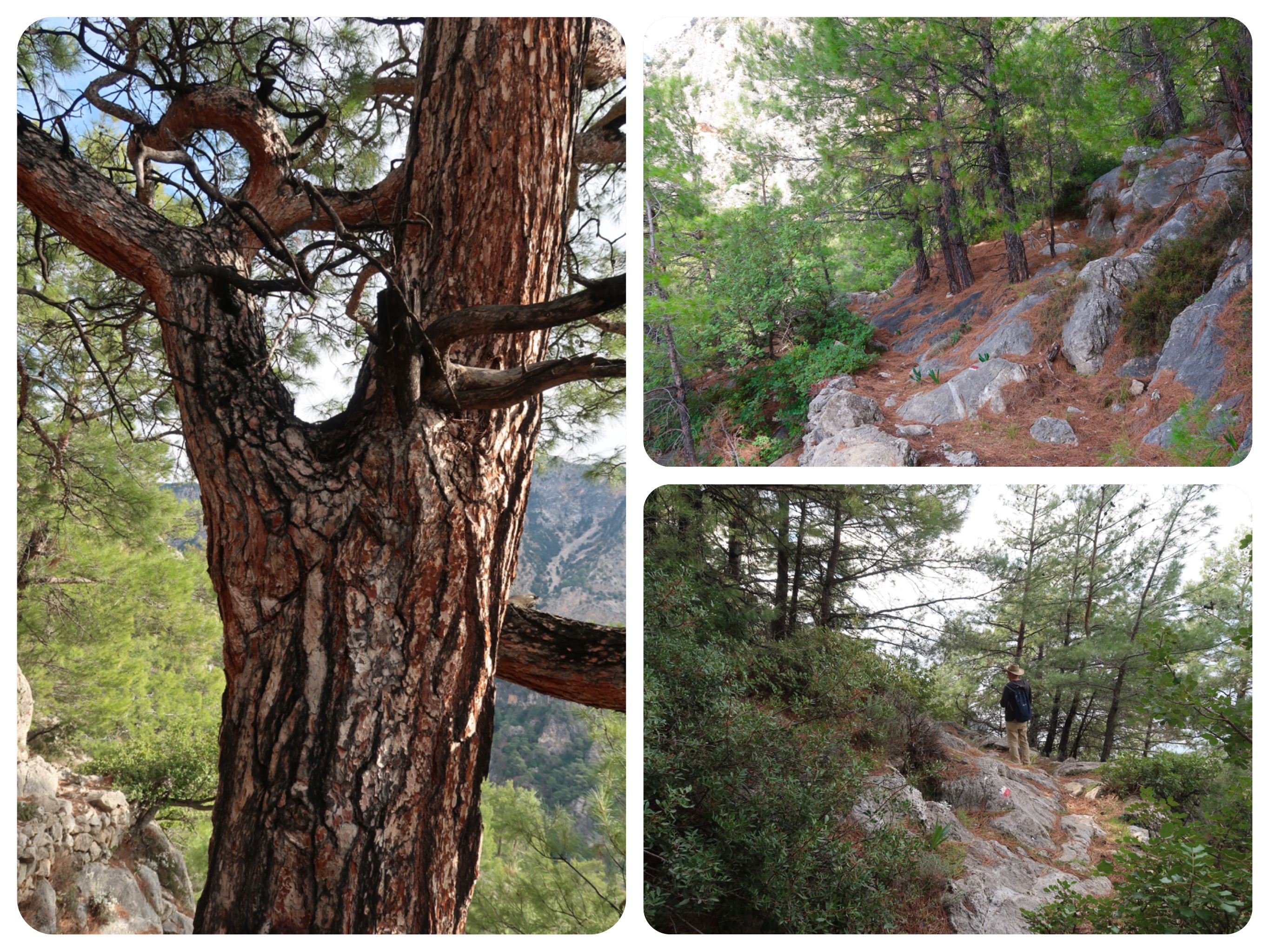
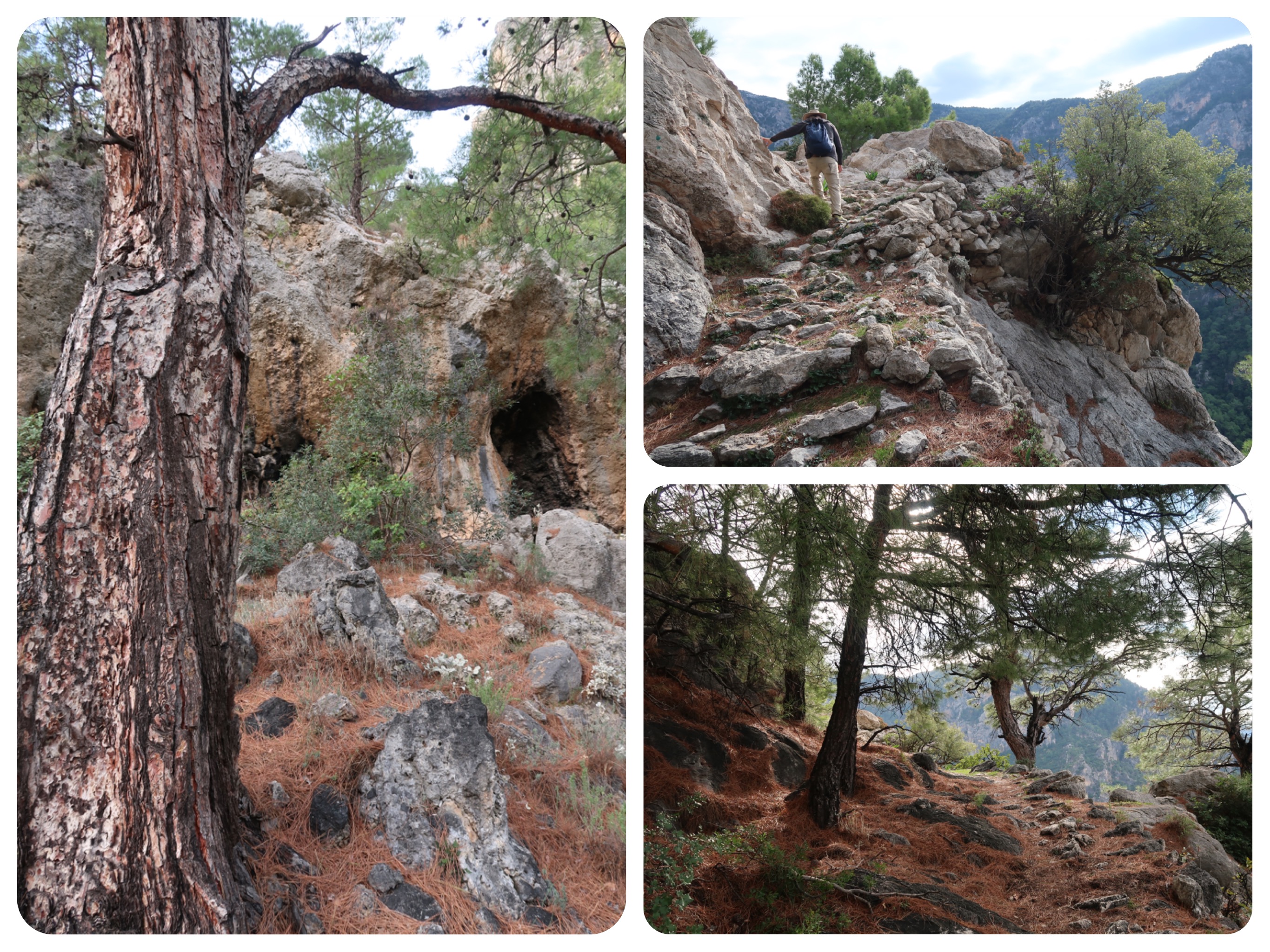
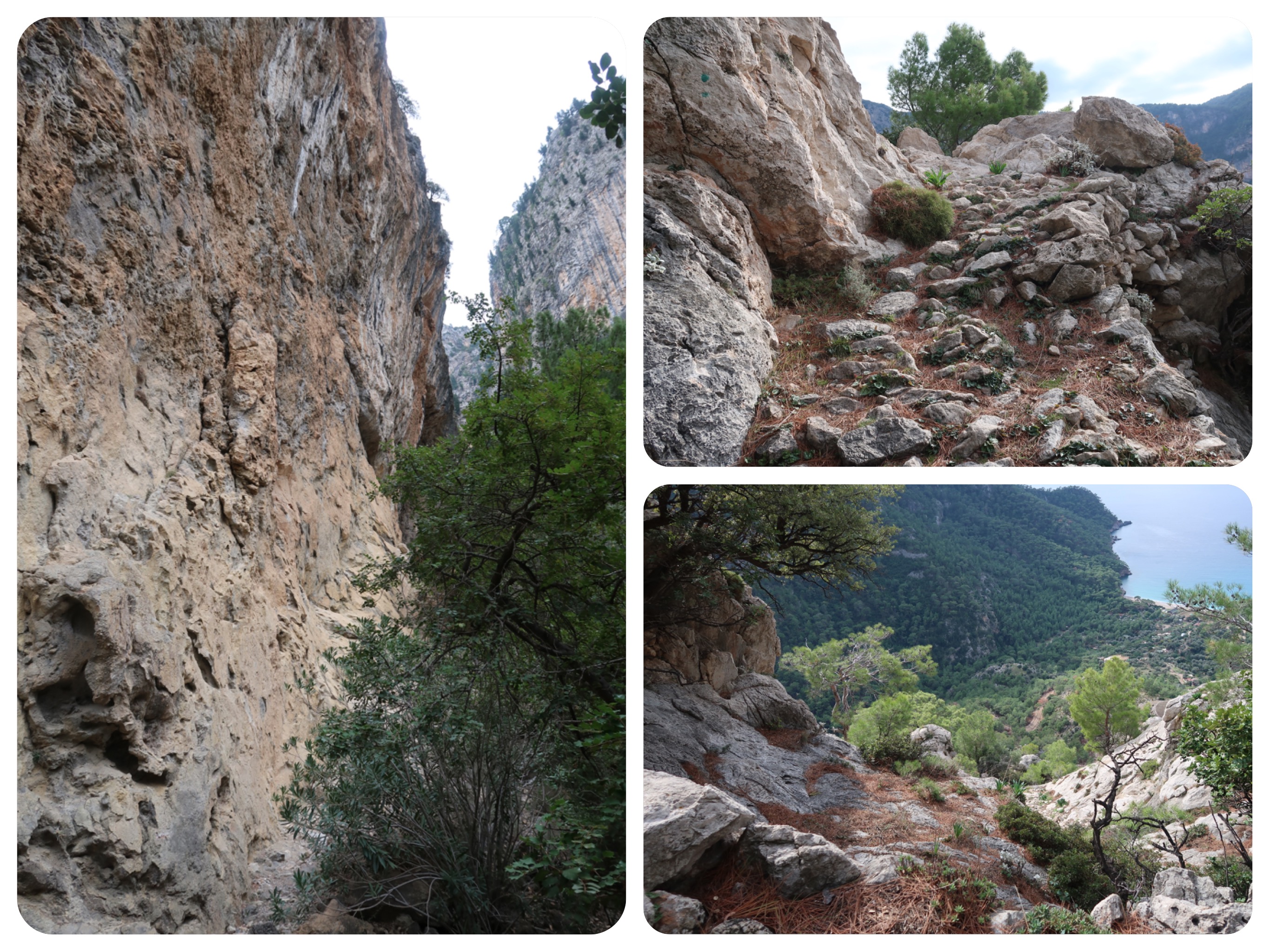
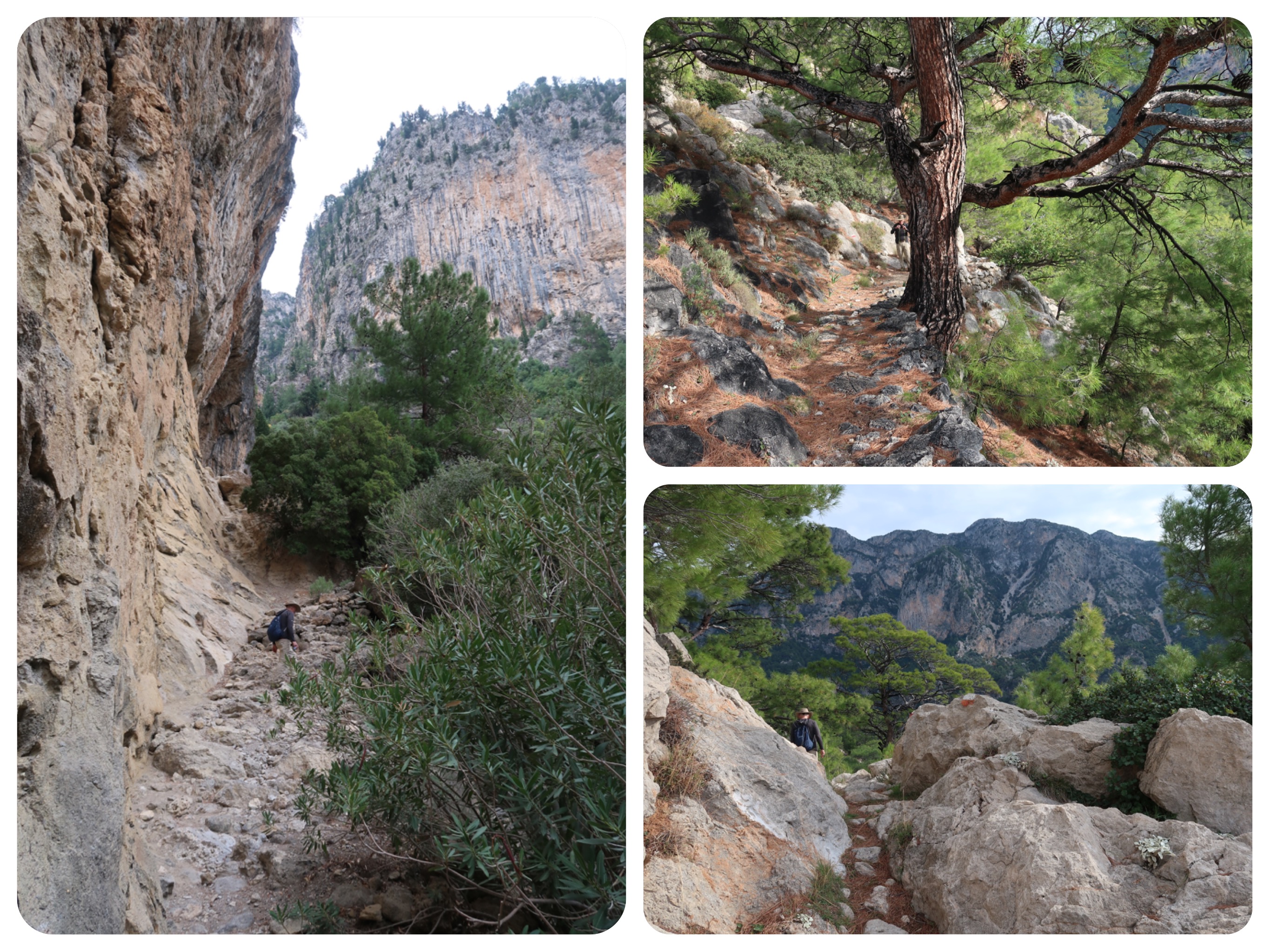
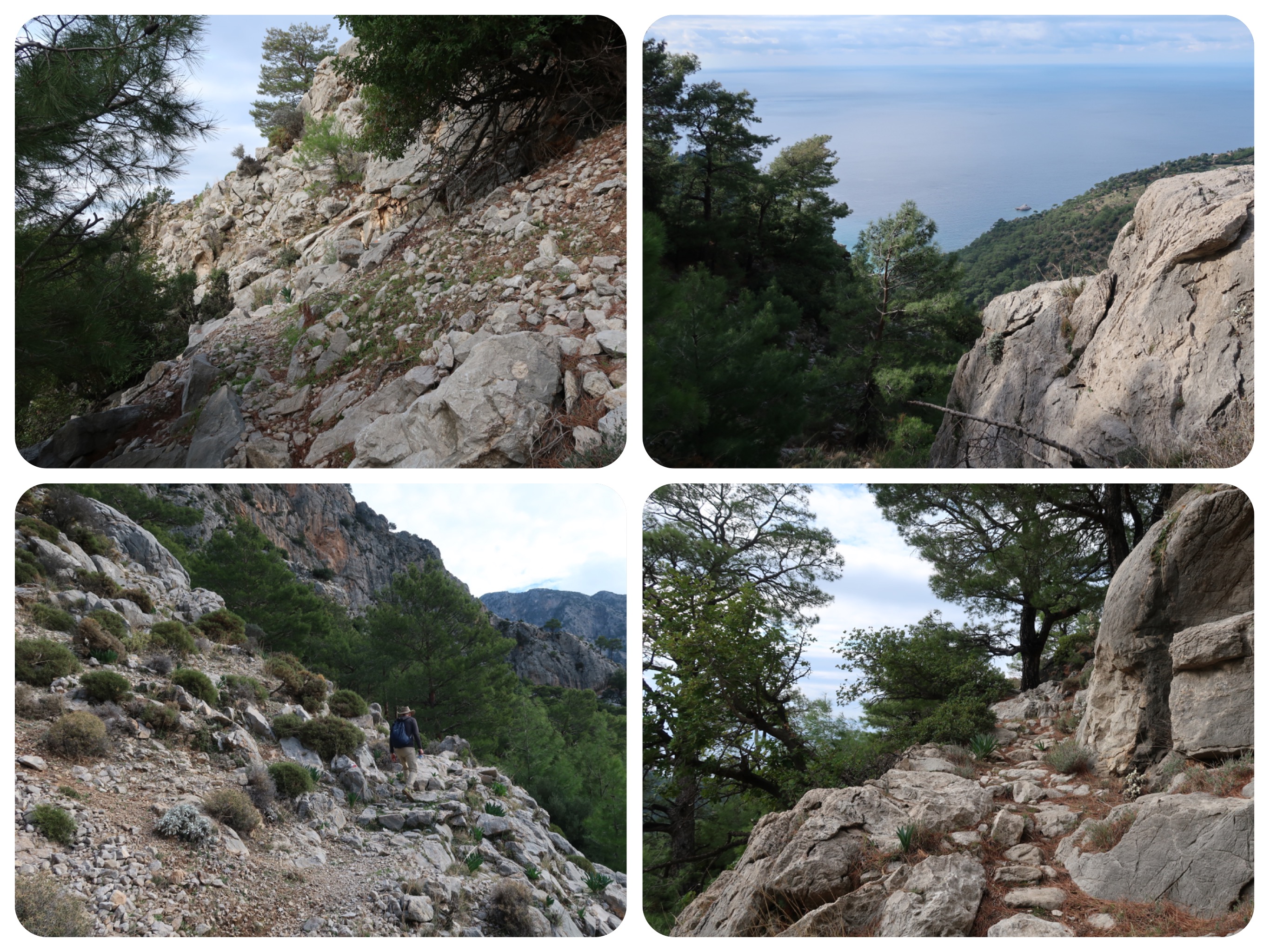
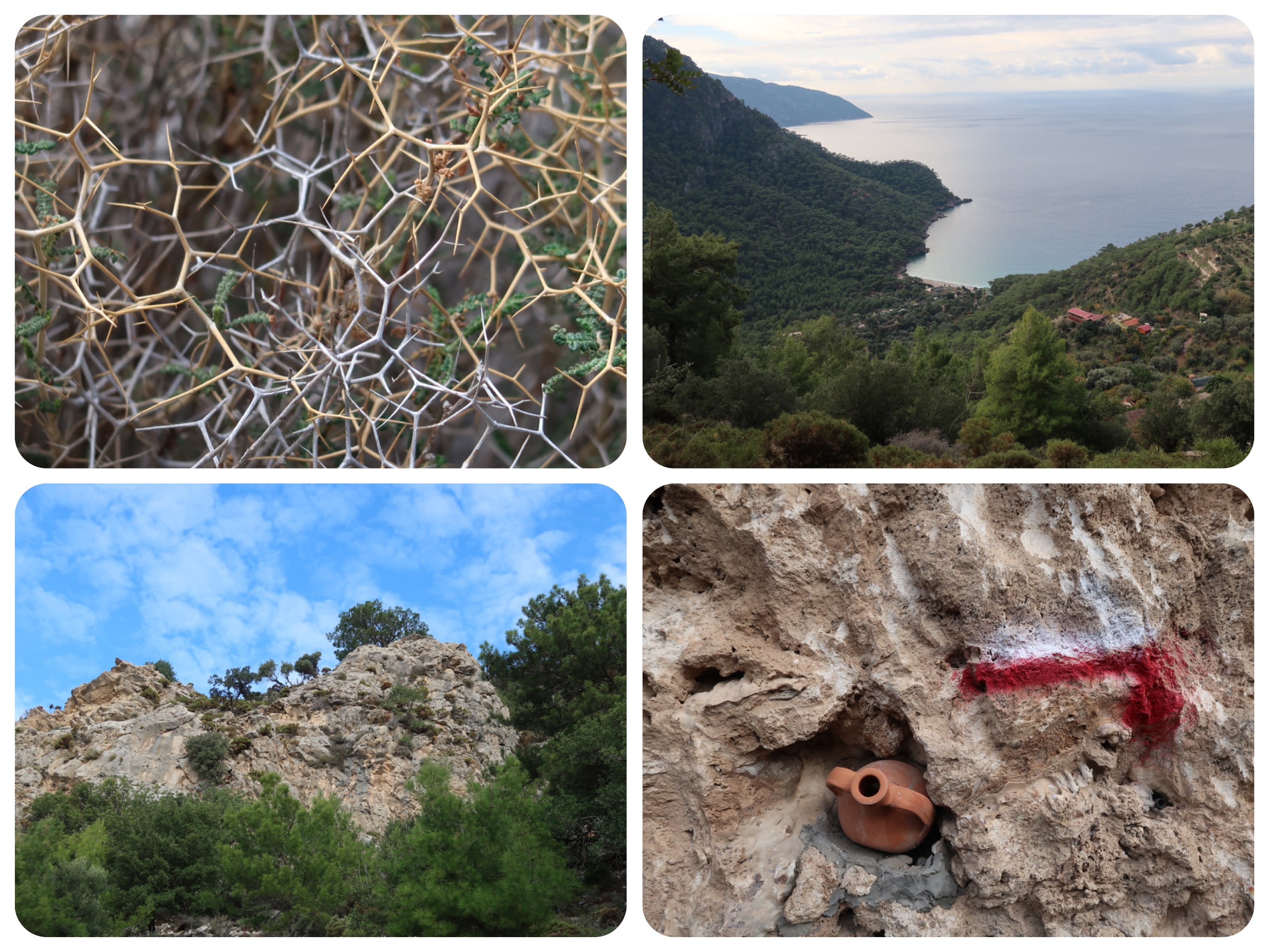
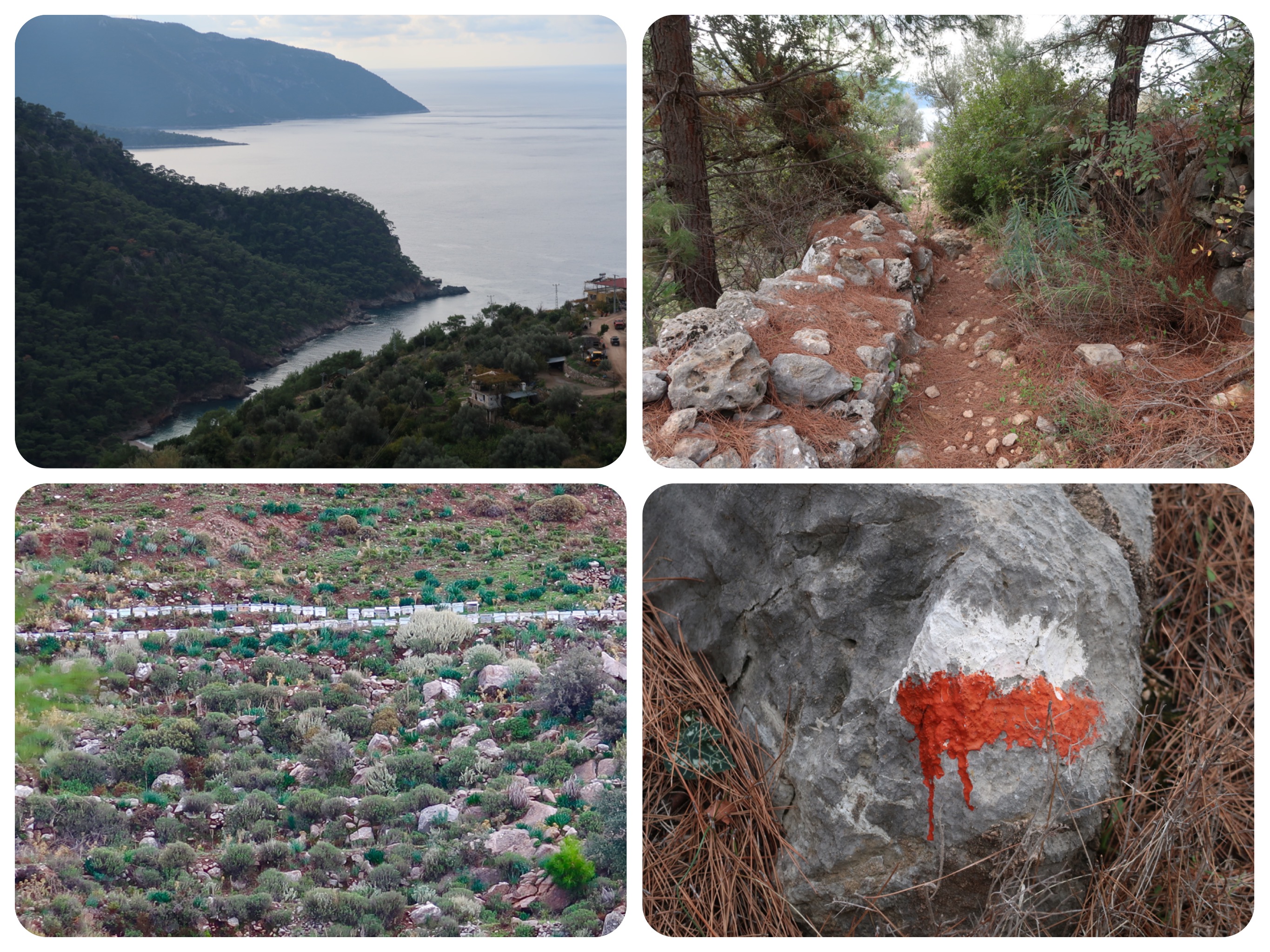
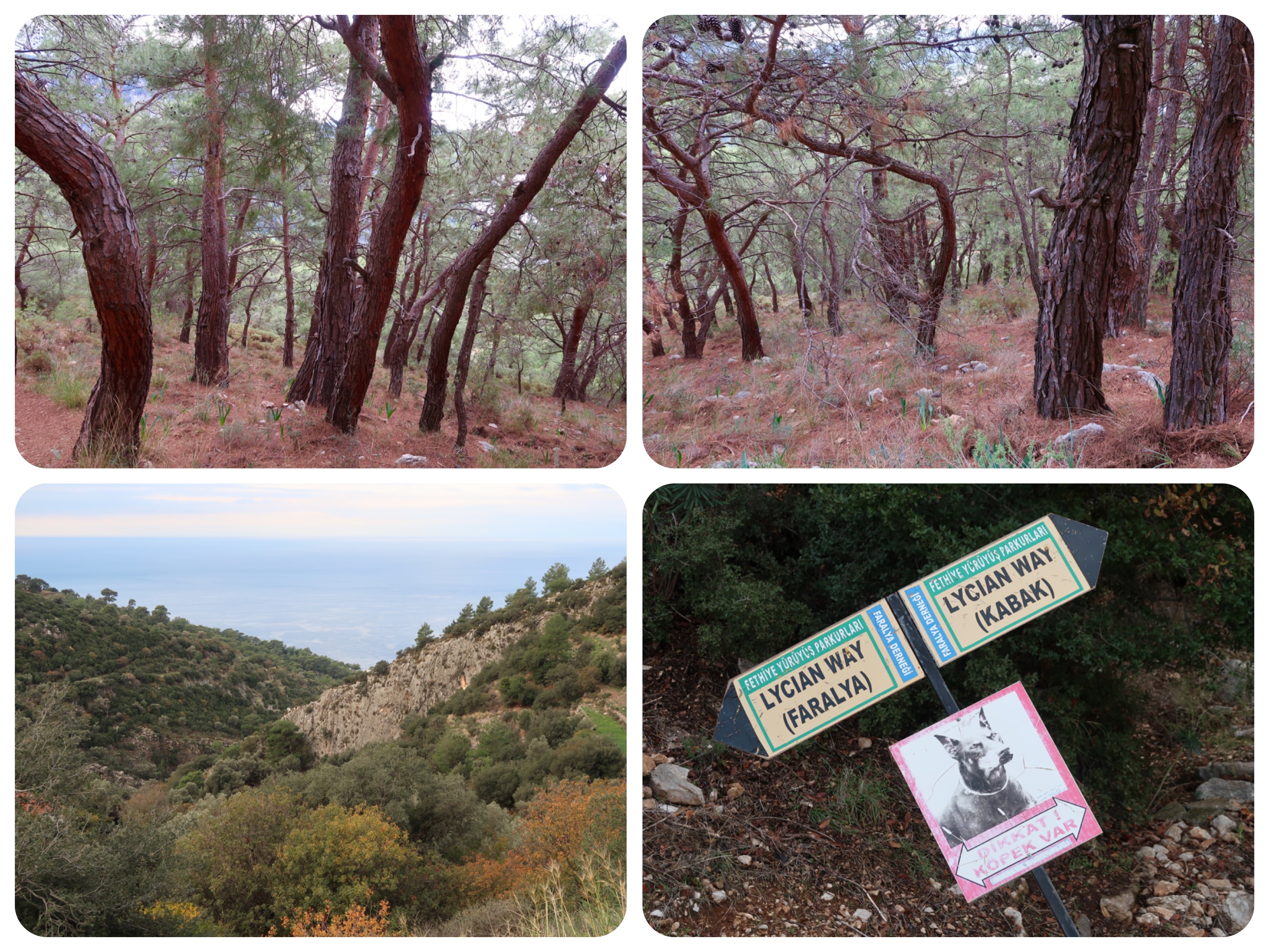
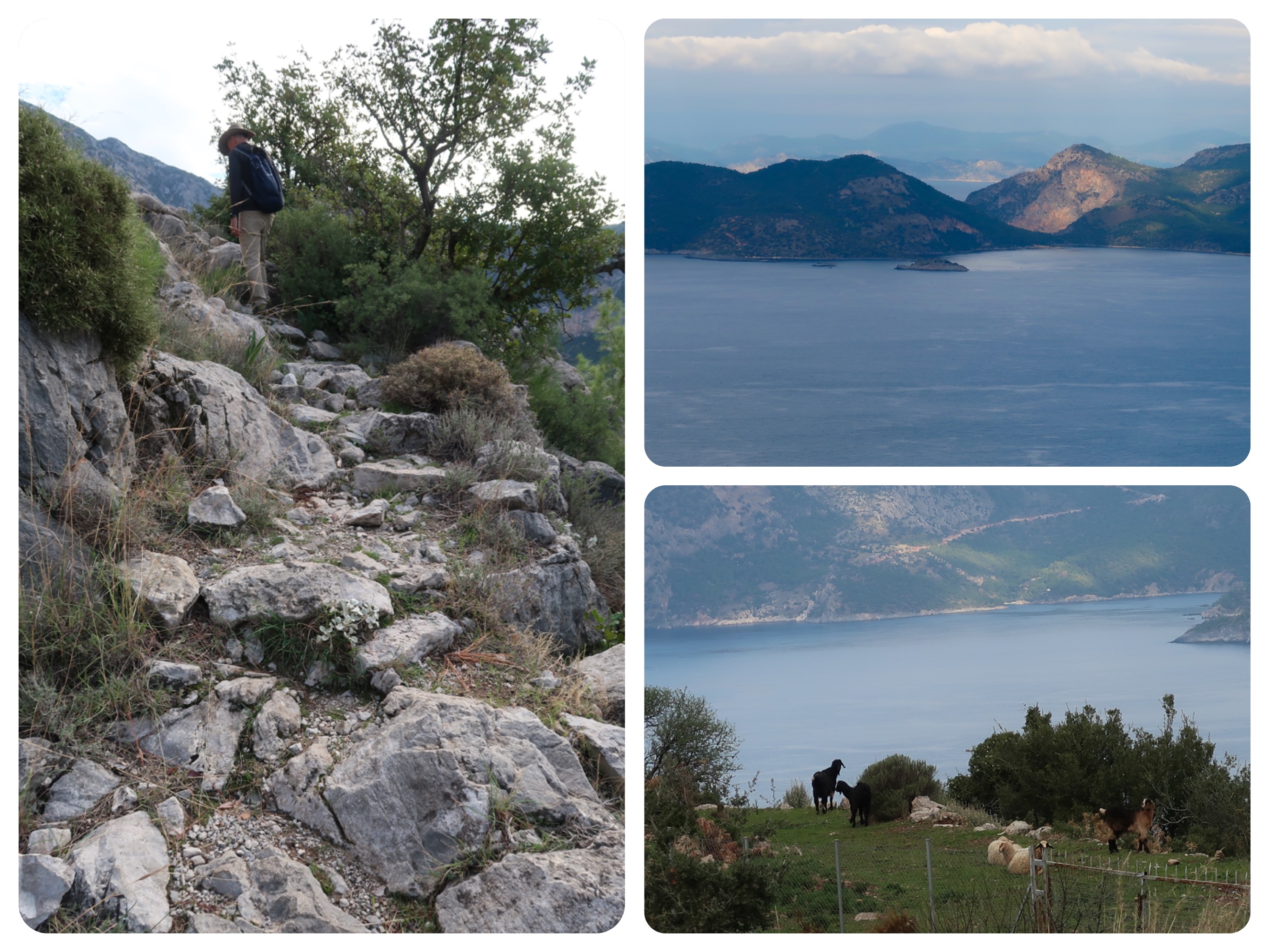
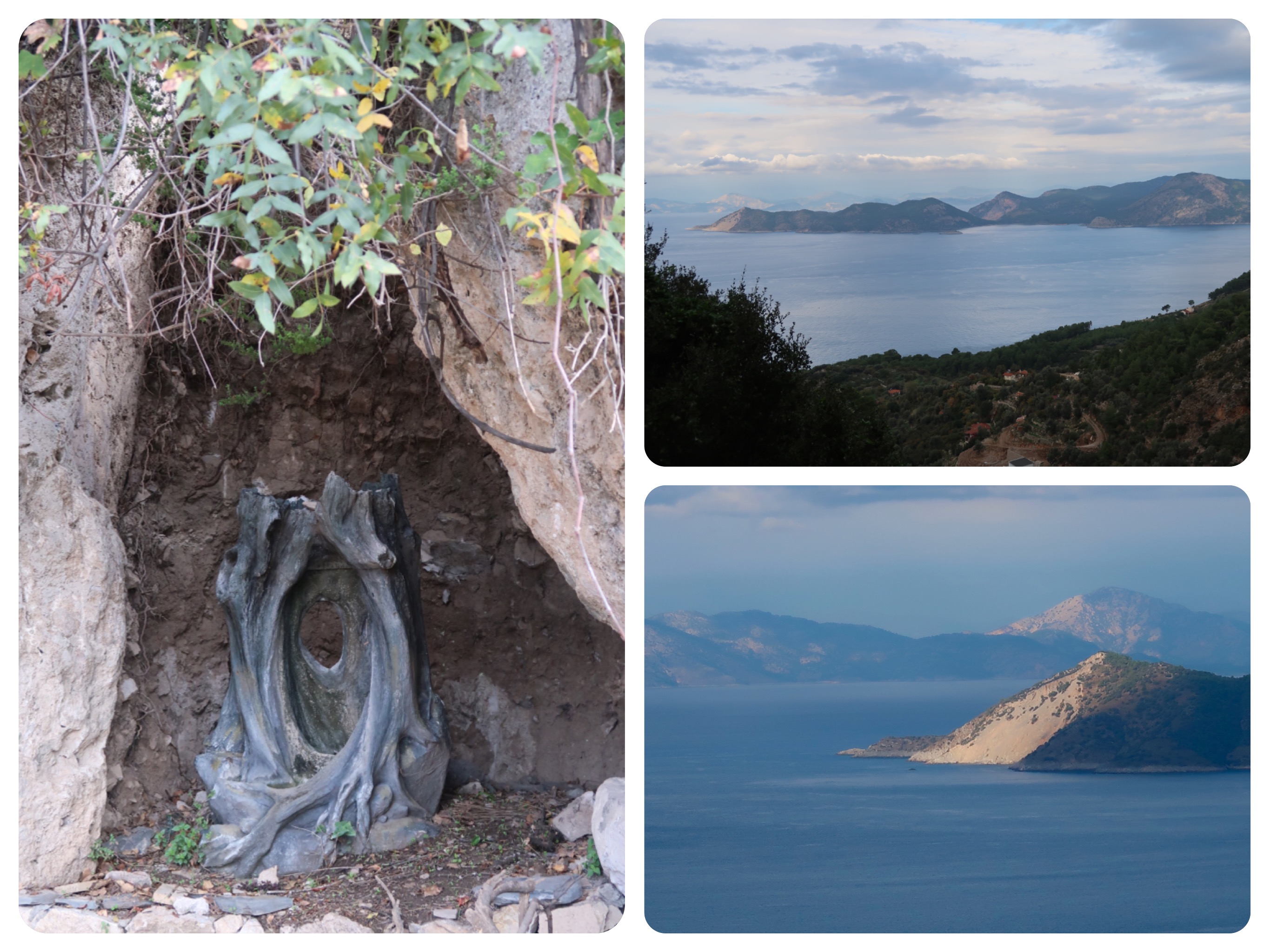
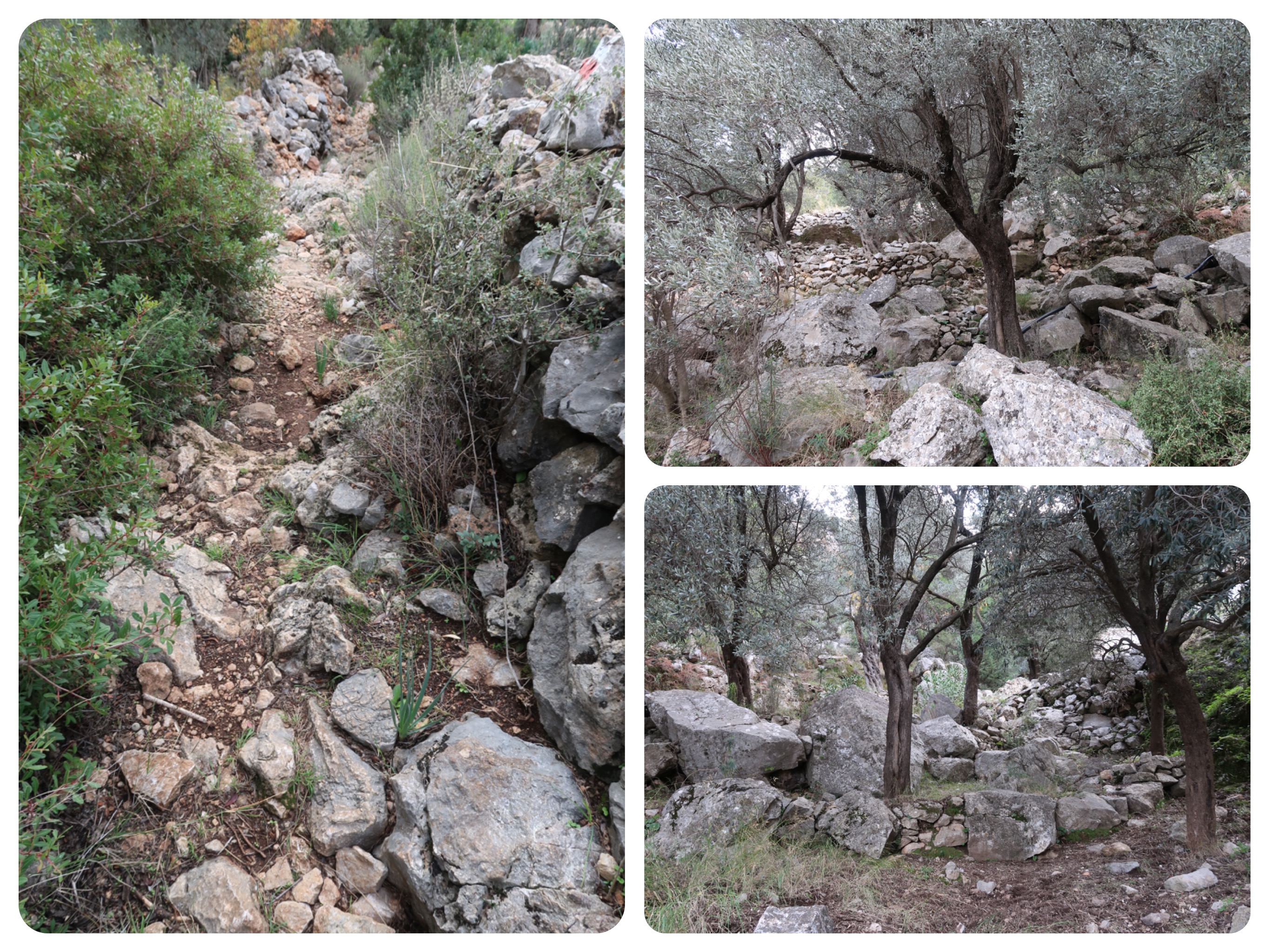
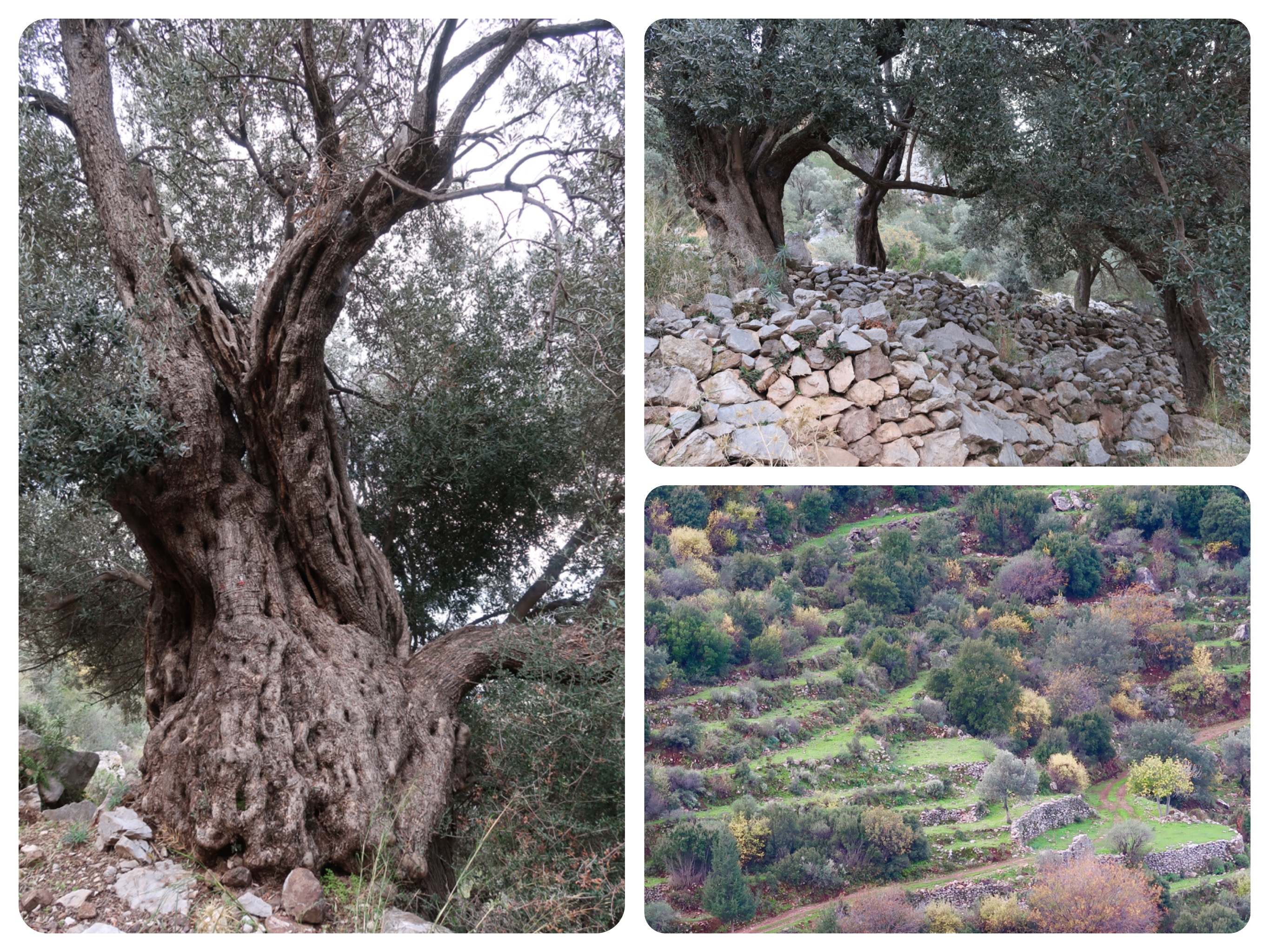
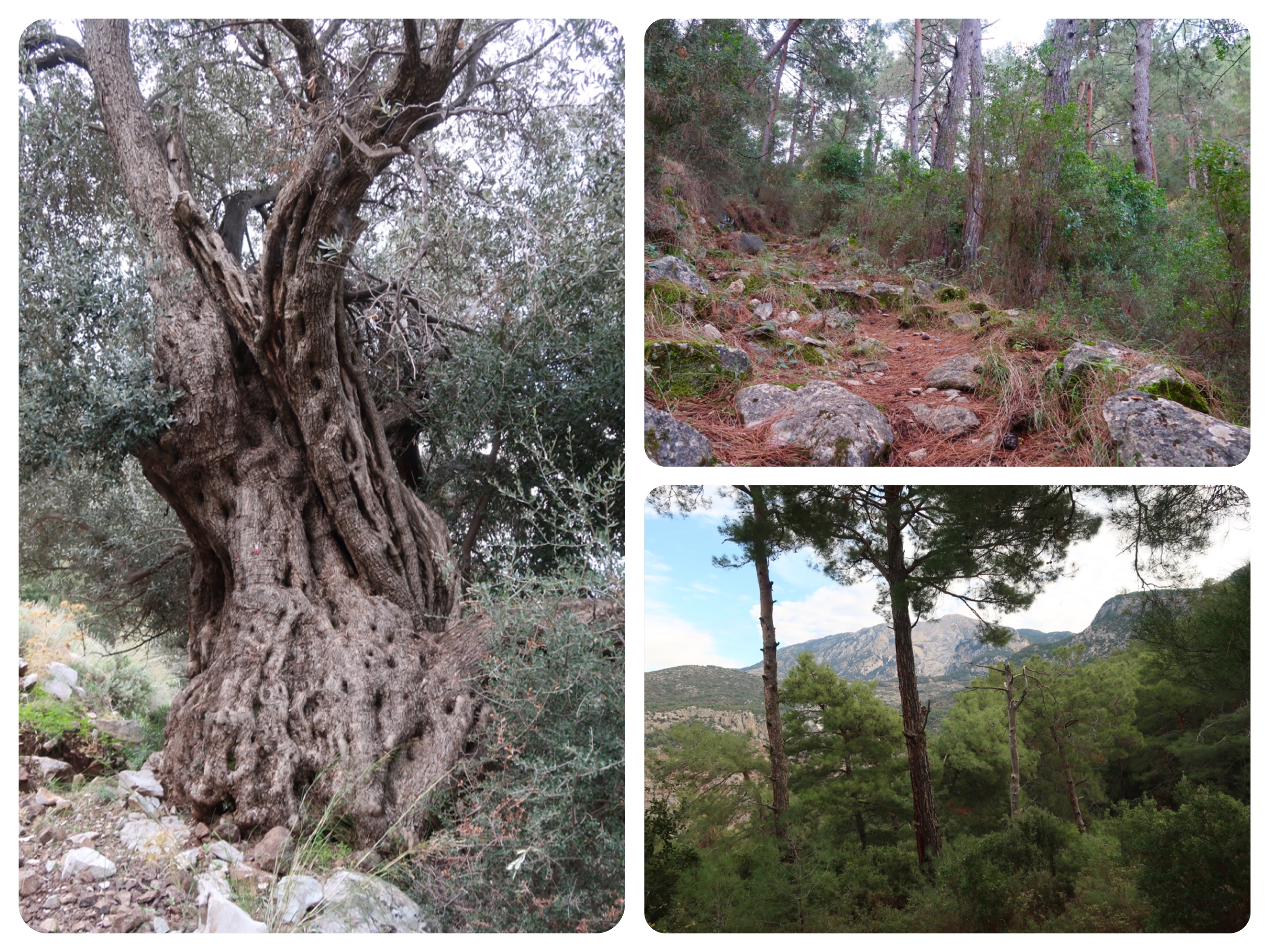

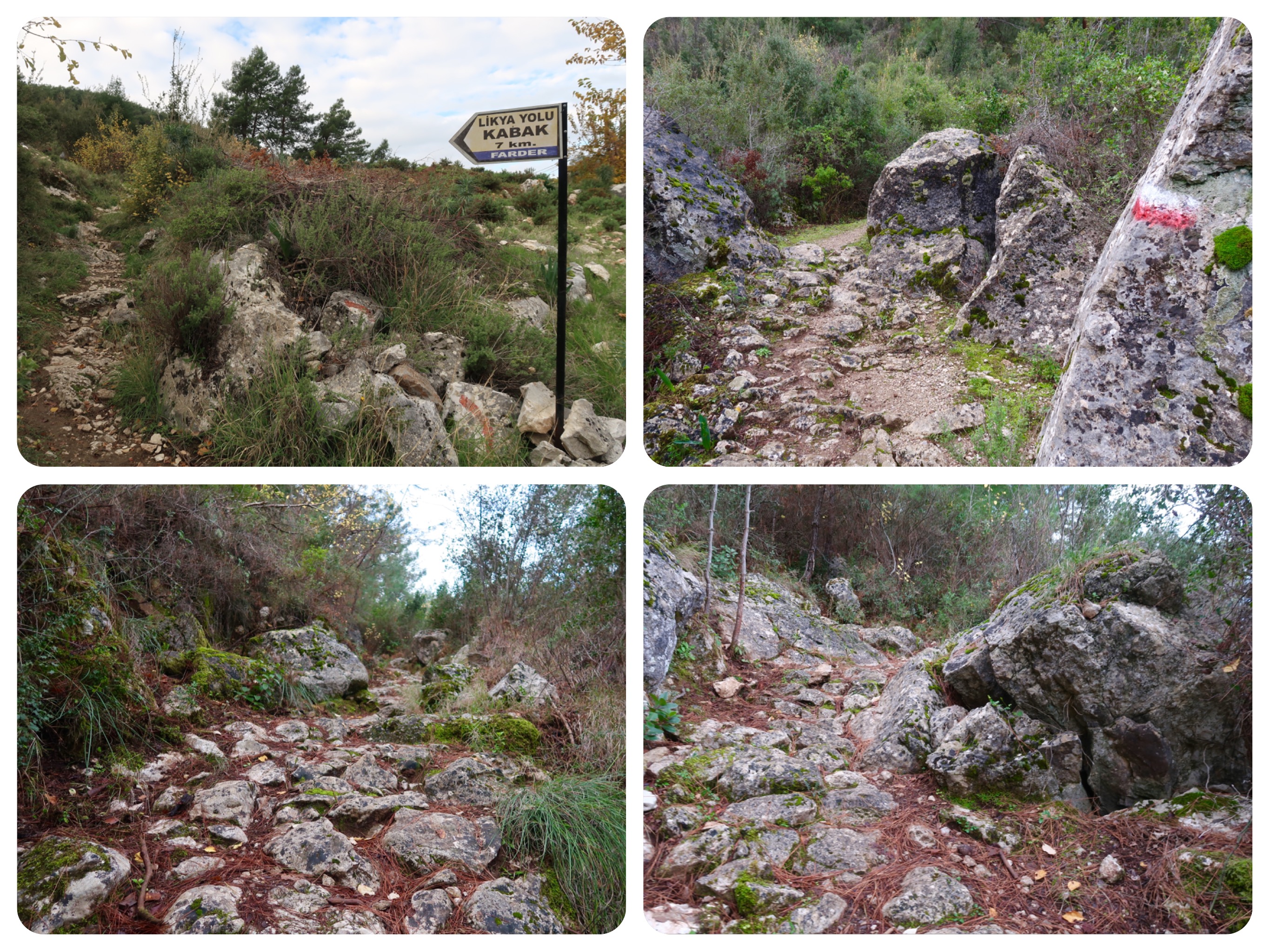
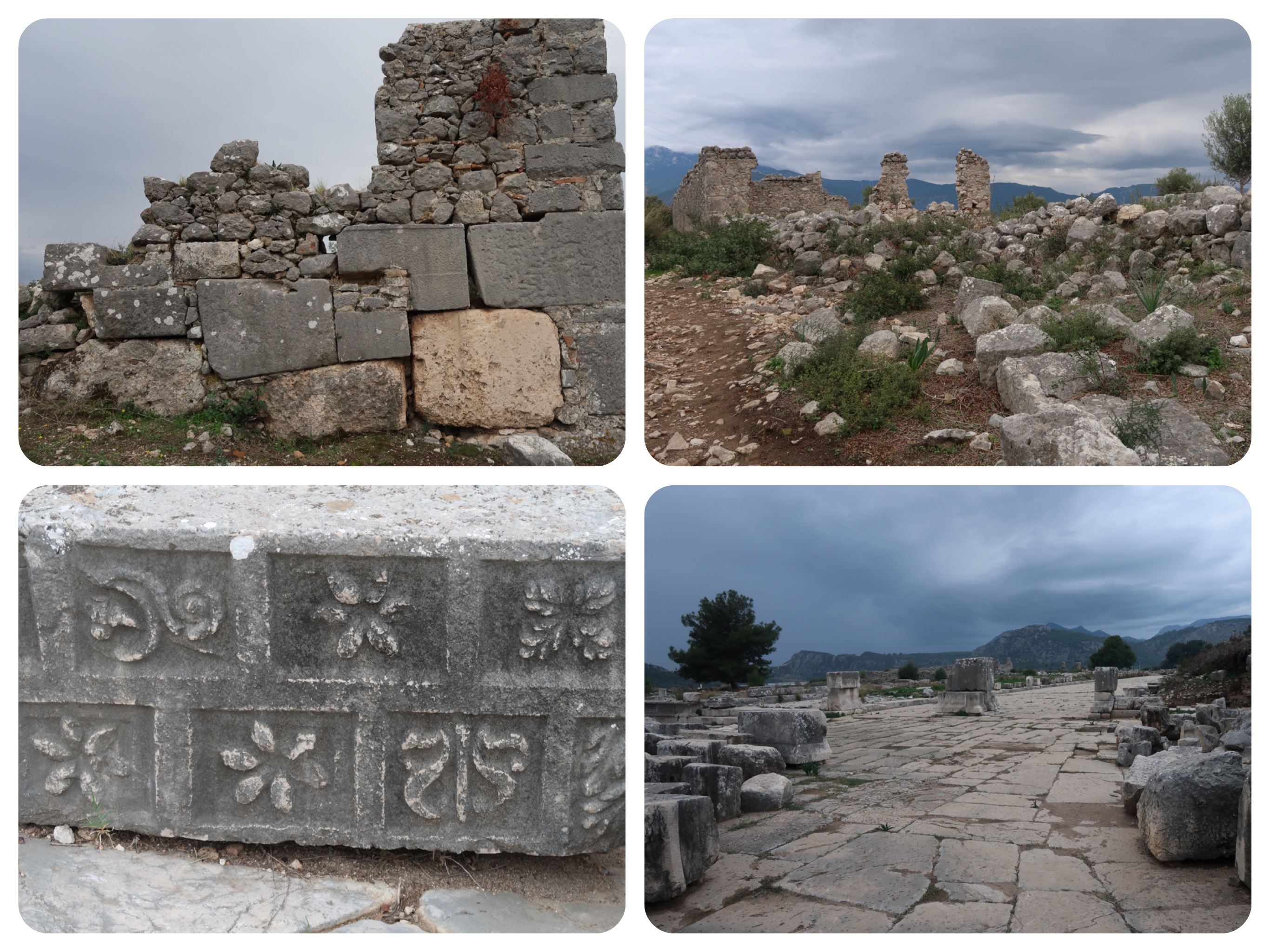
Hiking the Lycian Way, Turkey - Day 4 - Faralya to Kabak to Alinca, and the Lycian Ruins In Xanthos
This morning started with a good Turkish breakfast at our Misaferi Evi in Faralya.
There was the usual selection of local cheeses, home made jams, fresh bread, tomatoes and cucumbers, local honey and eggs, followed by herbal tea or çay, Turkish tea.
Our route book described today as easy in the morning, and very steep later in the day, with some hairpin steep turns by the end of the day.
Well... the guide book was wrong.
Almost immediately after we thanked our host in Faralya and started walking, the path veered into the mountains and we started climbing.
We climbed up a steep rocky path, sometimes through the forest, sometimes through thorny brush.
When we reached the higher, more level trail, we walked along the southwest slopes of Baba Dag mountain towards the village of Kabak.
As in previous days, the path was well marked with sign posts and red and white stripes painted on stones, boulders and trees.
Kabak village is small and charming, set above a small sandy beach that is protected by land on both sides.
It is almost like a deep bay, with clear blue waters.
We descended deeply down to the outskirts of the village, and then climbed very steeply up and up.
In fact, almost all day long we clambered over rocks, making our way slowly over stone avalanches that had completely washed out the path, either going down or climbing steeply up.
The forest had many pines trees, old olive trees, Carob trees, wonderfully smelling mountain herbs, sumac, and thorny brush.
We traveled up and down a few peaks, with views of the Mediterranean sea to our right, as we circled around the cliffs.
The only cafe we had reached by lunchtime was already closed up for the winter.
We sat on the basalt rocks and drank some water, also eating dried apples and mulberries we had brought with us.
I would have loved eating carobs, but the season was over and the ones I saw on the ground were wet and rotten.
All the natural spring-fed wells we passed today were dry of water.
The rocky, vertical cliffs of the Aladere valley were majestic and very tall.
We crossed rockslides and trail washouts many times, making sure that we had good footing on the rocks.
The path was very narrow at times.
A long and steep ascent took us out of the Aladere valley and over a ridge to the village of Alinca.
By the end of the day, both of us felt tired, our feet and legs fatigued from climbing rocky, uneven step-like terrain all day.
We had made arrangements to be picked up at the entrance to the village of Alinca (the “c” is pronounced like a “j”) by the owner of our guesthouse and taken to our accommodation.
True to their word, they were waiting for us at the beginning of Alinca village.
On the way to our accommodation in Patara, we stopped in Xanthos to see the ruins of the Lycian city there.
Ancient historical records described Xanthos as “The biggest Lycian City of all time,” as it served as the Lycians’ administrative and governmental capital.
The marble stone walkway is wide and is still in great shape.
The wide circular stone amphitheater is very impressive, and beyond it you can see the remains of houses, a temple and courtyards.
Beyond that, you can see the modern city of Patara, which is where most of the vegetables eaten in Turkey are grown.
Thousand of greenhouses fill the landscape, looking surreal.
Xanthos has several stone sarcophagi (coffins), some with inscriptions and decorations.
A very impressive stone pillar is incised with the Lycian language, all but forgotten for centuries and never completely deciphered by anyone.
There are a few tall tomb monuments.
One of them is decorated with sirens, taking the souls of the departed to the gods.
The original of this tomb monument is in the British Museum, and at Xanthos they have placed a ceramic reproduction of the missing top.
But perhaps the saddest story that occurred in Xanthos, is a mass suicide of most of its population.
In 540 BC, Xanthos was invaded by the Persian army.
The Lycians knew that they could not fight the massive Persina army, so they collected all their belongings and gathered their families, women, children and slaves in the acropolis, and committed mass suicide.
A small number of warriors stayed and burnt the bodies and possessions and then fought to the death.
Many of the Xanthosians were not at the city when this happened, and upon their return they rebuilt the city.
They were up in the Taurus mountains, herding their animals, just as they still do to the present day.
We had to leave Xanthos since it had started raining while we were touring this ancient city.
In Patara, we were shown to a small room at the pension.
We took showers, changed into yoga clothes and went for dinner.
The rain was intense, and since we were the only guests at the guesthouse, we were invited to dine in their own living room.
The room was wonderfully warm and decorated with Turkish rugs.
All the family and friends were gathered to watch TV.
We were served a great meal which we ate with great gusto.
We ate stuffed peppers, tomatoes and eggplant, a stew of potato, peppers and tomatoes, a big salad with homemade feta cheese and pomegranate dressing, and grilled Halumi cheese with red pepper.
We ate all this with slices of freshly baked bread, thinking this was all we were going to be served.
But then, to our surprise, came the plates of fresh white fish with lemon, rice and arugula!
For dessert, we ate some sweet oranges from their garden.
We enjoyed talking with the owner, as he spoke very good English.
He told us that right now, we were the ONLY ones walking the Lycian Way.
I was not surprised to hear this.
We have not seen anyone on the path.
Not locals, not tourists, not day hikers.
Even over the weekend, we did not see anyone hiking in either direction.
Imagine this..... we are now the only ones hiking the Lycian Way....
The electricity went on and off all evening at the guesthouse.
Not liking our small room, we lingered in the living room with the family.
The place has a generator, but we feared that we would be very cold at night.
We decided to be brave and ask if we could move to one of the bigger family rooms we saw that was open and empty.
We were told that it would be no problem if we wanted to move.
It was a great choice.
The new room is big and airy and we quickly shifted our things into it, hanging up the laundry that we had washed by hand.
The rain intensified in the evening, but I hope that it will be drier tomorrow.
Tomorrow we do not have to climb a steep, rocky mountain, but we plan to go to see the Lycian ruins in Patara.
From Turkey, wishing you lots of blessings and Gule Gule, (“see you,” in Turkish) and happy Hanukkah!
Tali
Today’s Stats:
Walking time 7 hours 9:30 - 4:30
Active walking time 5.5 hours
Steps 25,299
Kilometers walked 18.5
Highest altitude climbed 754 meters
Overnight in Patara
Flower pension in Patara (dinner and breakfast included)